contact tracing
description: process of finding and identifying people in close contact with someone who is infected with a transmissible pathogen
66 results
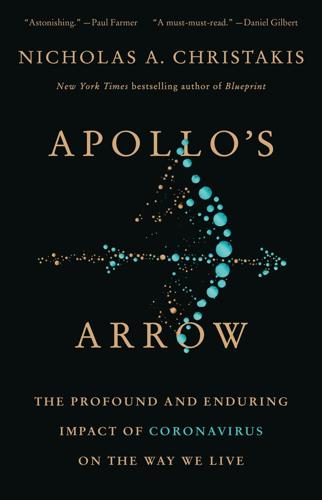
Apollo's Arrow: The Profound and Enduring Impact of Coronavirus on the Way We Live
by
Nicholas A. Christakis
Published 27 Oct 2020
Bt, No Magic Bullet: A Social History of Venereal Disease in the United States since 1880, Oxford: Oxford University Press, 1987; G.W. Rutherford and J.M. Woo, “Contact Tracing and the Control of Human Immunodeficiency Virus Infection,” JAMA 1988; 259: 3609–3610. 55 F. Fenner et al., Smallpox and Its Eradication, Geneva: World Health Organization, 1988, vol. 6; J.M. Hyman et al., “Modeling the Impact of om Screening and Contact Tracing in Reducing the Spread of HIV,” Mathematical Biosciences 2003; 181: 17–54; M. Begun et al., “Contact Tracing of Tuberculosis: A Systematic Review of Transmission Modelling Studies,” PLOS ONE 2013, 8: e72470; K.T. Eames et al., “Assessing the Role of Contact Tracing in a Suspected H7N2 Influenza A Outbreak in Humans in Wales,” BMC Infectious Diseases 2010; 10: 141; A.
…
Tuberculosis became the most common reason children were kept from school for long periods in England, prompting the reach of contact tracing to expand further into domestic life. By the time of the tuberculosis outbreak in England during World War I, contact tracing had become common practice in many urban schools.53 In the United States, contact tracing was first proposed as a program in 1937 by surgeon general Thomas Parran to stymie the spread of syphilis among troops, and the program was solidly established by the late 1940s (though Parran was also involved in the infamous Tuskegee syphilis study that deliberately left black men untreated for this disease).54 Over the course of the twentieth century, contact tracing has played an important role in the eradication of smallpox and in efforts to control infectious diseases as varied as HIV, tuberculosis, influenza, Ebola, and, of course, COVID-19.55 Nowadays, when people infected with a contagious disease are identified, either because they have symptoms or because tests have come back positive for active infection, specialized personnel interview them comprehensively—even intrusively—to help them recall everyone with whom they might have come into contact during the appropriate time frame of infectiousness.
…
There was no way for his tiny team to trace them all, even in a state with the lowest case count in the country. When the COVID-19 pandemic struck, states introduced a hodgepodge of ways of doing contact tracing and sourcing the requisite labor supply. In Massachusetts, the governor decided to build a “contact tracing army,” and he turned to a local nonprofit, Partners in Health, founded by two friends of mine from medical school, Paul Farmer and Ophelia Dahl. Using hard-won expertise from doing contact tracing for outbreaks in other parts of the world, the group planned to hire and train a thousand contact tracers who could work from their homes (where they were stuck anyway), each making twenty to thirty calls a day, which meant they could cover up to twenty thousand contacts.

How to Prevent the Next Pandemic
by
Bill Gates
Published 2 May 2022
And we now have solid evidence that, when paired with vaccines, NPIs could help us eventually eradicate every strain of flu. We should use contact tracing to find superspreaders. Depending on which country you live in, if you tested positive for COVID, you may have been called by someone asking about all the people you might have come into contact with. They probably focused specifically on the forty-eight hours before you first started feeling sick (if you did feel sick). This is the process known as contact tracing. Although it felt new to many people around the world during COVID, contact tracing is actually an old strategy. It was essential to eradicating smallpox in the twentieth century and is also at the center of strategies to fight Ebola, tuberculosis, and HIV in the twenty-first.
…
GO TO NOTE REFERENCE IN TEXT According to the journal Nature: “Why Many Countries Failed at COVID Contact-Tracing—but Some Got It Right,” Nature, Dec. 14, 2020. GO TO NOTE REFERENCE IN TEXT In March 2020: Ha-Linh Quach et al., “Successful Containment of a Flight-Imported COVID-19 Outbreak Through Extensive Contact Tracing, Systematic Testing and Mandatory Quarantine: Lessons from Vietnam,” Travel Medicine and Infectious Disease 42 (Aug. 2021). GO TO NOTE REFERENCE IN TEXT In two counties: R. Ryan Lash et al., “COVID-19 Contact Tracing in Two Counties—North Carolina, June–July 2020,” MMWR: Morbidity and Mortality Weekly Report 69 (Sept. 25, 2020).
…
In all, there were 32 cases related to the flight, a small fraction of the cases that would’ve happened if all those passengers and crew members had simply gone on their way. If you read the previous two paragraphs and thought, If anyone calls me about contact tracing, I’m not picking up the phone, you’re not alone. In two counties in North Carolina, many of the contacts who were named never returned the tracer’s phone call. And between a third and half of COVID-infected people who were reached claimed not to have had contact with a single person in the days before they tested positive. But contact tracing will often be an important part of stopping the spread of a disease, which is why we have to figure out how to build trust between public health agencies and the public so that more people will share their contacts.

Failures of State: The Inside Story of Britain's Battle With Coronavirus
by
Jonathan Calvert
and
George Arbuthnott
Published 18 Mar 2021
The case of Steve Walsh was an early lesson insofar as it illustrated how just one person could potentially infect large numbers of people who all then had to be contact traced and tested. The importance of contact tracing was highlighted in a report by scientists at the London School of Hygiene & Tropical Medicine, which was published on Friday 7 February, the day after Walsh’s infection had been announced – therefore a timely reminder for the government. It argued that the virus could be contained with a rapid track and trace system, but warned that an inadequate system could lead to infections spreading uncontrollably across the country. ‘Highly effective contact tracing and case isolation is enough to control a new outbreak of COVID-19 within 3 months,’ it said.
…
Professor Gabriel Scally, a leading public health expert and a former senior civil servant in the Department of Health, said: ‘If I was mobilising as a director of public health for something like the city of Bristol, I would have expected to have maybe between 300 and 500 people just for that place alone working on case identification and contact tracing. I have difficulty understanding why, for example, they weren’t even at a pretty early stage talking about really, really stepping up testing to try and find out where the virus was in a country as big as the UK.’7 Professor John Ashton, a former director of public health in the north-west of England, says the contact tracing could have been taken up by regional health services but they had been run down and restructured in the years before the outbreak.
…
It meant that Public Health England was highly dependent on its central laboratory in Colindale. ‘We used to have a very strong local network of laboratories, but they’ve allowed many of those to wither away.’ He believes the government could have addressed the contact tracing problem by using the thousands of environmental health officers in local councils. Many of those had been ‘saying they could have been available for contact tracing but nobody asked them’, he said. There was a similar failure to harness the resources of British private companies to build up the reserves of PPE in those weeks in January and February. The British Healthcare Trades Association (BHTA), which represents almost 500 companies employing more than 17,000 people who make or sell healthcare equipment, was poised ready to help supply PPE in February – but nobody from the government or the NHS contacted them.
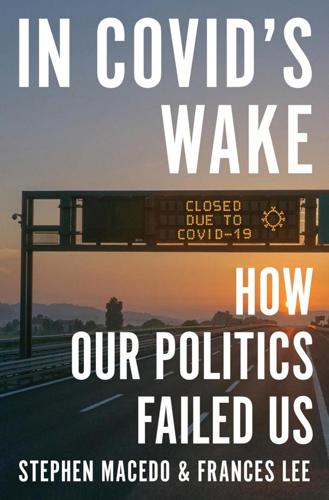
In Covid's Wake: How Our Politics Failed Us
by
Stephen Macedo
and
Frances Lee
Published 10 Mar 2025
No Western pandemic plans available at the outset of the Covid pandemic recommended large-scale NPIs such as universal quarantines or lockdowns, lengthy school closures, and mass testing and contact tracing. Such plans were even equivocal or skeptical about far less restrictive NPIs such as requiring masks. Examining documents published prior to 2020— including ones published in late 2019 by the World Health Organization (WHO) and Johns Hopkins University—we show that experts doubted the efficacy of a wide range of NPIs, including testing and contact tracing, masking, border closures, and quarantines in the form of stay-at-home o rders and business and school closures.
…
Control of a pandemic was something that had never before been accomplished in human history. We explain how previously disfavored approaches—large-scale quarantine, border closures, contact tracing, and other NPIs—emerged as the dominant strategy in the wake of a WHO report issued in February 2020, a fter a WHO delega tion had visited China. As this new conventional wisdom coalesced, new pandemic plans were hastily cobbled together in March and April 2020, most involving nationwide Covid testing and contact tracing of the entire population. These plans were clearly infeasible for purposes of implementation on a national scale. No cost estimates w ere even attempted, but they would have been astronomical.
…
The WHO’s November 2019 review designated several potential NPIs as “not recommended in any circumstances.” Among these w ere a suite of measures that would soon be deployed against Covid: “contact tracing, quarantine of exposed individuals, entry and exit screening, border closure.”5 The WHO concludes that quarantining exposed asymptomatic individuals—let alone of whole populations— “is not recommended, because there is no obvious rationale for this measure in most Member States.”6 With respect to contact tracing, the report allows only that it might be of some help in “isolated communities” in the “very early stages of a pandemic.”7 Consistent with its initial skepticism of NPIs, the WHO was still recommending against border closures on February 29, 2020, when it “advised against the application of travel or trade restrictions to countries experiencing COVID-19 outbreaks.”8 Importantly, the WHO presented NPIs as potentially useful for purposes of reducing and perhaps delaying the peak of pandemic infection, stretching out the pace of infection over a longer time period to allow health systems to cope.

Covid by Numbers
by
David Spiegelhalter
and
Anthony Masters
Published 28 Oct 2021
The delay in categorizing India as ‘red’ has therefore proved controversial, as it is likely to have sped up the introduction of the Delta (B.1.617.2) variant. Does contact-tracing work? People in contact with an infected person have a higher risk of infection. If contacts are infected, those people become another link in a chain of transmission. Contact-tracing is about breaking that chain by identifying people who have been in contact with an infected person.17 There are two main types of contact-tracing. Backward contact-tracing is when tracers seek to identify the source of infection, which requires considerable resources but has been successful in dealing with the spread of HIV.
…
Backward contact-tracing is when tracers seek to identify the source of infection, which requires considerable resources but has been successful in dealing with the spread of HIV. South Korean officials traced more than 5,000 Covid-19 cases back to meetings of a religious sect, whose leader was later arrested for hindering contact-tracing.18 The UK focused on forward contact-tracing, in which positive cases are interviewed and their recent contacts traced and told to isolate. Table 16–2 features key summaries of the weekly management information published by NHS Test and Trace in England.19 At the peak of the pandemic at the turn of 2020–21, nearly 390,000 people a week were transferred to the system. They identified around 740,000 close contacts, most of whom were asked to self-isolate.fn4 In April 2021, the ONS asked people if they followed self-isolation requirements:20 an estimated four in five (84%) claimed to do so, although to admit otherwise would have been to acknowledge breaking the law.
…
We consider death counts, clarifying different definitions, showing how age and sex matter and examining personal risk. We point out the care needed in comparing countries and drawing analogies with past epidemics and other hazards. One controversial aspect of the pandemic has been the effectiveness of non-vaccine measures such as face masks, lockdowns or contact-tracing. We look at collateral effects, positive and negative, how behaviour has changed and economic consequences. The pandemic has affected our feelings as well as our bodies, so we examine changing beliefs about the risks posed by the virus, the role of misinformation on social media, and the impact on mental health and well-being.
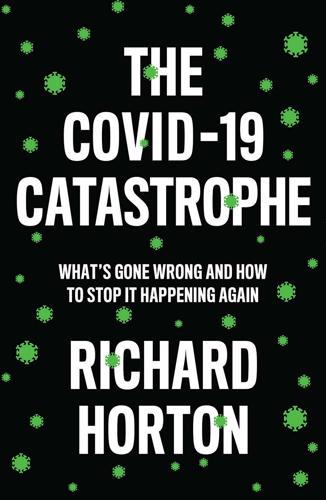
The COVID-19 Catastrophe: What's Gone Wrong and How to Stop It Happening Again
by
Richard Horton
Published 31 May 2020
Does greater surveillance truly imperil our freedom? In April, the Financial Times asked whether the advent of coronavirus apps meant that society was slipping gradually into a surveillance state. Apple and Google were working together to construct a wireless-based contact tracing system to inform someone if they crossed paths with a person who had had COVID-19. Aggressive detection of new cases, contact tracing and quarantine is the public health bulwark necessary to prevent subsequent waves of SARS-CoV-2 infection. Digital surveillance, the FT suggested, may become the greatest incursion into privacy our societies have ever seen. But, so far at least, people seem sanguine.
…
It could be a valuable measure of the health system’s ability to treat severe cases of the infection. Rt would be a sensitive indicator to tell whether the epidemic is resurfacing. Real-time monitoring of Rt will depend on implementing community testing for the early detection of infection, with subsequent contact tracing if someone is found to have the virus, and then quarantine to prevent possible further transmission. Digital monitoring of levels of social mixing could also be helpful. But maybe the truth is that life will never fully return to normal until a vaccine becomes available – and perhaps not even then.
…
Practically, there must be a scientific readiness to identify the agent causing an outbreak, develop diagnostic tests, and discover new medicines and vaccines that could treat and eventually prevent the disease. The public health response that was needed was also clear – surveillance, early detection, isolation, contact tracing, quarantine, accumulating surge capacity within the health system to cope with what might be tens of thousands of severe infections, and effective communication to the public. Modern quarantine means reducing the frequency of social contact, voluntary home curfew, cancelling mass gatherings, avoiding public transport, and closing public buildings and workplaces.

Uncontrolled Spread: Why COVID-19 Crushed Us and How We Can Defeat the Next Pandemic
by
Scott Gottlieb
Published 20 Sep 2021
In most scenarios, highly effective contact tracing and case isolation is enough to control a new outbreak of COVID-19 within 3 months.” See Joel Hellewell et al., “Feasibility of Controlling COVID-19 Outbreaks by Isolation of Cases and Contacts,” Lancet Global Health 8, no. 4 (2020): 488–96. “Taking recent estimates for COVID-19 transmission we predict that under effective contact tracing less than 1 in 6 cases will generate any subsequent untraced infections, although this comes at a high logistical burden with an average of 36 individuals traced per case. . . . The current contact tracing strategy within the UK is likely to identify a sufficient proportion of infected individuals such that subsequent spread could be prevented, although the ultimate success will depend on the rapid detection of cases and isolation of contacts.”
…
We’ll never know for sure the full scope of the spread that was set in motion by the White House cluster.7 The White House didn’t make any visible effort to use contact tracing to isolate the source of the outbreak or to identify those who became infected through successive chains of transmission. High-level officials who attended the event told me they were never called by White House contact tracers.8 A group of CDC epidemiologists were already detailed to the White House—they had been there for months to implement the White House testing protocols and assist with contact tracing when cases emerged inside the compound. However, these CDC staff were never fully engaged in trying to get to the bottom of the chain of transmission that was ignited that day.
…
Reporters mused that Bloomberg’s White House correspondent, Jennifer Jacobs, became the chief contact tracer through her successive articles and tweets identifying and linking the cases that emerged as part of the cluster.9 Even if the White House engaged no outward signs that it was conducting robust contact tracing, everyone else wanted to know: Who was patient zero? After all, the outbreak put the president’s life in serious danger. It turns out, two reporters for the New York Times, Michael Shear and Al Drago, were among those infected in the outbreak. So the newspaper set out to do some contact tracing of its own. With two of its own staff members carrying the strain that sickened people that day, the Times had what it needed to begin its sleuthing.

Aftershocks: Pandemic Politics and the End of the Old International Order
by
Colin Kahl
and
Thomas Wright
Published 23 Aug 2021
For example, relying on the security services’ surveillance technology—whereby a text was sent to an individual who had been in close proximity to an infected person—meant that the government did not develop a civilian system of contact tracing that used trained personnel to locally suppress outbreaks when they occurred. As one Israeli health official told us: “The technology piece is only one part of the game. It provides about 30 percent of the notifications you need. You have to have an efficient human contact tracing capability. And you need to be very fast.… We wasted three months from March to June and did not develop that capability.” Meanwhile, the Israeli government consulted officials from Taiwan, South Korea, and other Asian countries that had handled the pandemic well.
…
After what felt like an eternity, on January 31, 2020, Trump’s national security and health teams convinced him to take action by banning travel from China. It was an important, though insufficient, step—the ban still allowed tens of thousands of Americans and others from China to fly back to the United States, which would require a significant program of testing and contact tracing that was never put in place. Crucially, the virus was already circulating in America. The next day, Robert O’Brien, the U.S. national security advisor, began asking other countries to follow suit. The virus could be contained only if everyone acted swiftly, but was it already too late? The Australians had barred travel from China and the Japanese were on board.
…
Most countries failed. Some, such as Germany and Israel, did well at first but struggled once the second wave hit. A few, including Australia, New Zealand, South Korea, and Taiwan, performed consistently well, avoiding the national lockdowns that became commonplace in Europe. Instead, they relied on aggressive contact tracing, isolating the potentially infected, and imposing draconian restrictions on travel. Some of these nations enjoyed geographical advantages that made it easier to keep the virus at bay, but they generally had one other thing in common: they had experience mishandling recent epidemics, pandemics, or other national disasters, and had learned their lessons.
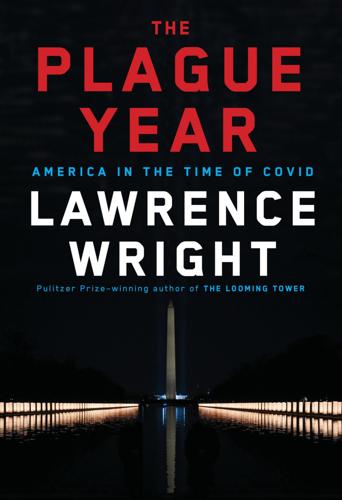
The Plague Year: America in the Time of Covid
by
Lawrence Wright
Published 7 Jun 2021
Whether the delay was caused mainly by the CDC or the FDA, Azar oversaw both agencies. Without the test kits, contact tracing was stymied; without contact tracing, there was no obstacle in the contagion’s path. America never had enough reliable tests, with results available within two days, distributed across the nation. By contrast, South Korea, thanks to universal health insurance and lessons learned from a 2015 outbreak of MERS, provided free, rapid testing and invested heavily in contact tracing, which was instrumental in shutting down chains of infection. By the end of 2020, the country would record some 50,000 cases in total; the U.S. was reporting more than four times that number every day.
…
Questions concerning the severity and contagiousness of a disease, or how to handle potentially hazardous waste, should be directed to the Department of Health and Human Services (HHS), the Federal Emergency Management Agency (FEMA), and the Environmental Protection Agency (EPA). Is there evidence of deliberate intent, such as a terrorist action? The FBI has the lead. Have isolation and quarantine been implemented? How robust is contact tracing? Is clinical care in the region scalable if cases explode? There are many such questions, with decisions proposed and agencies assigned. Because the playbook was passed to a new administration that might not be familiar with the manifold resources of the federal government, there are appendices describing such entities as the Surge Capacity Force in the Department of Homeland Security, consisting of a group of FEMA reservists and others that can be called upon as “deployable human assets.”
…
Of the Chinese known to have contracted the virus before January 1, 26 percent had no exposure to the Wuhan wet market or to people with apparent respiratory symptoms. (In the following weeks the proportion of people with no obvious source of infection surpassed 70 percent.) Armstrong realized that, unlike SARS or MERS, there were probably a lot of asymptomatic or mild infections with the SARS-CoV-2 virus. That spelled trouble. Contact tracing, isolation, and quarantine were probably not going to be enough. These telling details were buried in Table 1. Viruses circulate in our bodies all the time, but not until a virus causes an infection do we begin to talk about disease—when HIV becomes AIDS, or SARS-CoV-2 becomes Covid-19.
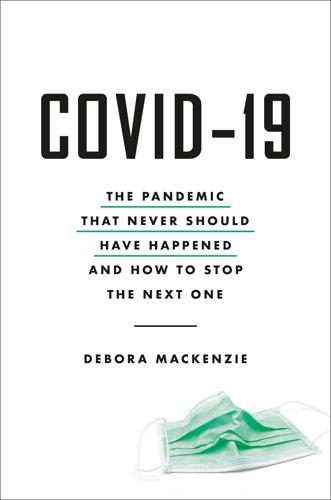
Covid-19: The Pandemic That Never Should Have Happened and How to Stop the Next One
by
Debora MacKenzie
Published 13 Jul 2020
That means the number of cases you get per day or per week does not rise as high or as fast—the now-famous “flattening the curve.” And even though you are in theory only slowing the spread, you also save lives, as more people who need intensive care can get it. In the course of the Covid-19 epidemic, China discovered that outside Wuhan and Hubei province, a mix of mitigation and containment actually worked best: first contact tracing and quarantine to break chains of infection and then, if necessary, varying levels of mitigation to slow the spread of the virus, which, because fewer people were catching the virus from each person who had it, also made containment more feasible. But on January 22nd, Wuhan was already at the point where lockdown was deemed necessary.
…
“The authorities in Wuhan spotted the outbreak as an unusual cluster of pneumonia, but then spent weeks saying there was no evidence of human-to-human transmission when in fact it was doing exactly that.” They knew enough to act, and they missed their window. All that would have been needed, he says, would have been surveillance to spot the outbreak early, then intensive containment and contact tracing, to break all the chains of transmission before there were many cases. In fact, those were tools China already had. In 2003, the SARS coronavirus initially spread out of control in China, and eventually in countries around the world, because doctors’ initial warnings about the outbreak were stifled, at first simply by local bureaucratic inertia.
…
Using a massive set of data on real social interactions in the UK, Matt Keeling at the University of Warwick and colleagues found that using the official UK definition of contact—being within two meters of someone for at least 15 minutes—you have to trace and quarantine 36 people per case of Covid-19 just to catch and isolate four of every five people that case infected. That’s a lot. And contact tracing might not be enough. As we have seen, the Chinese subsequently discovered that the key to stopping Covid-19 is using social distancing as well as containment. The variable that matters—and about the only piece of epidemiology jargon you really need to know to get all this—is R0, the basic reproductive number.

System Error: Where Big Tech Went Wrong and How We Can Reboot
by
Rob Reich
,
Mehran Sahami
and
Jeremy M. Weinstein
Published 6 Sep 2021
Why stick to an outmoded model of manual contact tracing, with health care workers monitoring the movement of infected individuals, when digital technologies could enable large-scale tracking via GPS devices, cell phone towers, Bluetooth connections, internet searches, and commercial transactions? The tech optimists pointed to South Korea’s success against the coronavirus, where widespread testing combined with a data-driven approach to tracking movement led to rapid declines in the COVID-19 infection rate. In pursuit of a fully modern approach to contact tracing, Google and Apple announced an unprecedented partnership to develop a contact-tracing app that would use low-level Bluetooth signals to alert anyone whose mobile device had come near an infected person in the past two weeks.
…
But whereas the Chinese government is comfortable with mandating access to people’s personal information, in a democracy, the growth of digital contact tracing depends on balancing the public health benefits against people’s concerns about privacy. The efforts by Apple and Google to develop a COVID-19-tracing technology demonstrate this careful balancing act at work. If you opt into the system, your phone will let you know when you have been exposed to someone who has tested positive for the virus—as long as that person has also downloaded the app and truthfully updated his or her health status. As an alternative to traditional modes of contact tracing—the slow, patient work of manually listing people who have tested positive and visiting them in their homes—this is a revolutionary approach.
…
See also Amazon bias elimination, 80–82, 86–87, 101, 105–6 Biden, Joe, 222, 228, 261 big tech platforms agenda to limit power of, 255 antitrust actions vs., 63, 227–28, 241, 253 balancing competing values vs. empowering workers, 179–80, 258 benefits of automation without responsibility for displaced workers, 176 beyond self-regulation, 216–21 building deep neural networks, 162 China’s big tech companies, 51 Congress and the tech leaders, 63–65 constrain market dominance of, 256–57 costs and benefits, xxvi–xxix criticism of content, bipartisan, 189 data mining, 117–19 disrupting the marketplace and the values we cherish, 239–40 lack of market competition among ISPs, 62 lobbying by, 45–49, 146–47, 253, 261 and objective indicators of “credibility,” 226 and platform immunity, 221–26 power of, xii, xvii, 25–26, 30 shutting down Trump’s access after January 6 insurrection, xi–xii Bina, Eric, 30 Biometric Information Privacy Act of Illinois (BIPA), 46–47 biotechnology fraud, xxx blitzscaling, 28, 39 Bock, Laszlo, 99 Bosworth, Andrew, 18–19 Brandeis, Louis, 199 Brennan, Jason, 66 Brosnan, Sarah, 92 Browder, Joshua, xix–xxi Brown, Jerry, 94–95, 147 Buolamwini, Joy, 112–13, 241 Bush, George W., 172 Business Roundtable, 181 businesses AI-related taxes on, 182–84 corporate efforts at AI ethics, 166 determining obligations of, 221–26 downstream impact, 39–40, 45 and OKRs, 27–28, 31–34 rethinking the role of corporations, 181 stakeholder capitalism, 256 tax-related subsidies for, 179 VCs and scalability of businesses, xxviii See also big tech platforms BuzzFeed News, 193 California, 47–49, 94–97, 98, 99–100, 146–47 California Consumer Privacy Act (CCPA), 145–47, 238, 241 Californians Against the Reckless Bail Scheme, 96–97 Cambridge Analytica scandal, 37, 128, 146–47, 254 Canada, 104, 218 Capitalism and Freedom (Friedman), 37 Caplan, Bryan, 66 capuchin monkeys identify fairness, 92 Carnegie Foundation for the Advancement of Teaching, 244–45 Carter, Ashton, 258–59 Catsimatidis, John, 115 Center on Budget and Policy Priorities, 183 checkers, AI playing, 20, 84, 156, 158 chess, IBM’s Deep Blue computer, 156–57 children’s recognition of fairness, 91 China, 51, 170–71, 263 Christchurch, New Zealand, terrorist attack, 189 Churchill, Winston, 73–74, 200 Cicilline, David N., 47–48, 64 citizens big tech vs., xxviii governing vs. being governed by technologists, xxviii–xxix, 68–69, 257–63 greater productivity vs. human flourishing, 169 as hobbits and hooligans, 66 overcoming poverty to make a life worth living, 170–71 tensions between liberty and equality, xxxii See also democracy; human judgment Clark, Gregory, 170 cleartext and ciphertext, 127 Clearview AI, 115 Clegg, Nick, 216 Clinton, Bill, 59–60 Clipper Chip technology, 115–16 cloud computing companies, 43 Cohen, Joshua, 70, 203 communications market, 55–59 COMPAS algorithmically-generated risk assessment, 88 computer science, 10–15, 251 Congress of the United States, 63–65, 71–72 consent, 148–49. See also Notice and Choice/Consent doctrine consumer-privacy bill of rights, 146, 148 contact-tracing app development, 113, 139, 140–42, 242–43 content moderation, 72, 189, 201, 209–15, 218, 221, 223–24, 226–27, 262 Cook, Tim, 64–65, 134–35. See also Apple corporate growth and optimization mindset, 33–37 COVID-19 pandemic contact-tracing app development, 113, 139, 140–42, 242–43 effect of, xii–xiii governments’ responses to, 69, 74–75 Taiwan’s successful strategy compared to US failure, 242–43 window into human dependence on digital tools, 240–41 creating an alternative future overview, 243, 263–64 governing technology before it governs us, xxviii–xxix, 68–69, 257–63 new forms of resistance to corporate power, 252–57 technologists, do no harm, 244–51 Creative Commons, xxiii credit cards, AI targeting suspicious activity on, 162 criminal justice system algorithm design for, 99 cash bail system overhaul in California, 94–97, 98, 99–100 decisions about fairness, 94–95 individual’s right to appeal a decision, 108 judges’ responses to algorithmic decision-making, 102 ProPublica investigation of racism in Florida, 97 “Criminal Tendency Detection . . .”
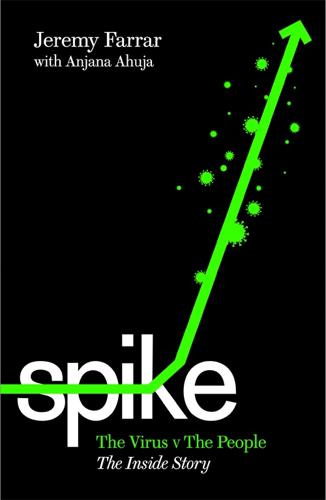
Spike: The Virus vs The People - The Inside Story
by
Jeremy Farrar
and
Anjana Ahuja
Published 15 Jan 2021
Despite the PM claiming it would be world-beating, it was not really functional nor anywhere near the capacity needed to make a difference. Contact tracing needs to reach 80 per cent of an infected person’s contacts within 48 hours to make inroads into an epidemic. The reality was closer to 50 per cent. Centralising the TTI, and bypassing local authorities, was a mistake. As anyone who has ever worked in diseases knows: all epidemics are local. Local authorities around the UK housed regional public health teams who knew their communities well and were used to contact tracing for outbreaks of food poisoning and sexually transmitted diseases. A related problem around that time was the NHSX app, integral to the TTI effort.
…
There was another unwelcome development: five people had shown up in Hong Kong with unexplained fever after visiting Wuhan. Yet the Chinese authorities had not yet found – or not yet chosen to disclose – the cause. By 5 January 2020, the WHO, guided by the official information it was receiving from Wuhan, was reporting that there was no significant evidence of human-to-human transmission. Contact tracing was underway to find those linked to the Wuhan patients, many of whom had been stallholders at the seafood market. The persistent market link, the WHO reported, ‘could indicate an exposure link to animals’. That tight case definition resulted in an Escher’s loop of misguided circular reasoning: testing only those people with a link to the market created the illusion that the market was the source of disease, because everyone testing positive had been there.
…
‘In many ways, this outbreak could not be happening at a worse time,’ I agreed, unthinkingly clicking a ballpoint pen on and off. I admitted I’m not a huge fan of travel restrictions because people can get round them by using other routes, though they do usefully signal to the public that the situation is serious. They also buy time to put tried and tested health measures in place: testing, contact tracing and quarantine. It might only be a day, a week or a month, but that is better than nothing. Still, there was a catch: border controls must be put in place early, comprehensively and for a long time, as New Zealand did. Meanwhile, China’s sudden lockdown was adding uncertainty and complexity to the second day of emergency deliberations in Geneva.

Reset
by
Ronald J. Deibert
Published 14 Aug 2020
Retrieved from https://www.lawfareblog.com/location-surveillance-counter-covid-19-efficacy-what-matters; Anderson, R. (2020, May 12). Contact tracing in the real world. Retrieved from https://www.lightbluetouchpaper.org/2020/04/12/contact-tracing-in-the-real-world/; Sapiezynski, P., Pruessing, J., & Sekara, V. (2020). The Fallibility of Contact-Tracing Apps. arXiv preprint arXiv:2005.11297. Such apps will be wide open to malfeasance that could distort the utility of the data: Anderson. Contact tracing in the real world. The safeguards around them must be exceptionally strong: Geist, M. (2020, March 24). How Canada should ensure cellphone tracking to counter the spread of coronavirus does not become the new normal.
…
In Hungary, the far-right leader Viktor Orbán ordered a sweeping emergency law that gave him carte blanche to bypass parliament and the courts and rule by personal decree, suspending all elections indefinitely and imprisoning opposition members without due process. The emergency law has no end date. Not surprisingly, officials turned to technology to help combat the pandemic and assist in contact tracing and quarantine enforcement. The latent capabilities of social media and surveillance capitalism were too obvious to ignore as governments struggled to mitigate the spread of the virus and control the movement of populations. Many officials proposed turning to cellular, telecommunications, and social media providers to provide location data.
…
As I write, there are numerous proposals worldwide to employ digital location data to assist in the effort to combat the spread of COVID-19, although their efficacy is unclear.422 In a world where we reflexively look to big tech for solutions, it’s not surprising that Google and Apple have teamed up to develop a protocol for “anonymized” contact tracing through smartphone apps. But as Cambridge computer security expert Ross Anderson warns, such apps will be wide open to malfeasance that could distort the utility of the data collected: “The performance art people will tie a phone to a dog and let it run around the park; the Russians will use the app to run service-denial attacks and spread panic; and little Johnny will self-report symptoms to get the whole school sent home.”423 Like others who have already weighed in on the issue, I believe that however much these prove to be useful in public health emergencies, the safeguards around them must be exceptionally strong too.424 Some basic restraint mechanisms should include strict limits on data retention, clear limitations on use, and restrictions on access to ensure that the data are not illegitimately redeployed for other reasons (like catching chicken wing thieves and jaywalkers … or monitoring human rights defenders).
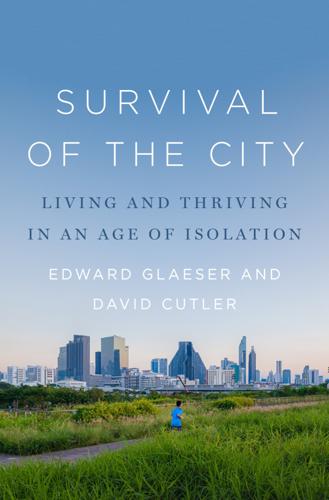
The Survival of the City: Human Flourishing in an Age of Isolation
by
Edward Glaeser
and
David Cutler
Published 14 Sep 2021
Walker, Mark. “ ‘If We Get It, We Chose to Be Here’: Despite Virus, Thousands Converge on Sturgis for Huge Rally,” The New York Times, August 11, 2020. www.nytimes.com/2020/08/07/us/sturgis-motorcyle-rally.html. Wallace-Wells, Benjamin. “Can Coronavirus Contact Tracing Survive Reopening?” The New Yorker, June 12, 2020. www.newyorker.com/news/us-journal/can-coronavirus-contact-tracing-survive-reopening. Wallis, Patrick. “A Dreadful Heritage: Interpreting Epidemic Disease at Eyam, 1666–2000.” History Workshop Journal 61, no. 1 (Spring 2006): 31–56. https://doi.org/10.1093/hwj/dbi060. Walsh, Mark. “Teachers’ Rights under COVID-19: Anxiety Meets Legality.”
…
While US medical spending gets whatever it needs, the public health infrastructure in the US hangs by a thread; even the smallest disruption can overload it. The budget of the Centers for Disease Control and Prevention is about $22 per person per year. The federal, state, and local public health system as a whole spends about $300 per person per year. This covers everything from monitoring infectious disease outbreaks and contact tracing to ensuring childhood vaccinations to designing obesity reduction programs. The Medicare program by itself spends eight times that amount, and Medicare is but one fifth of the nation’s spending on medical services. By another metric, public health is the one area of health care in which Canada significantly outspends the US.
…
New Zealand’s Parliament decided that a temporary loss of freedom was an acceptable price to pay for life. Ardern was empowered and she issued a stay-at-home order with “few exceptions.” Returning New Zealanders lost the option to self-isolate. Their quarantine was managed by the state. The country did things that scientists were advocating everywhere. Contact tracing had been put into place even in February and was scaled up as the cases began to emerge. Testing was widespread, including testing the asymptomatic, which is the only way to learn the true prevalence of the disease. The number of new cases started to decline after April 10, but the amount of testing increased substantially after that point.

Exponential: How Accelerating Technology Is Leaving Us Behind and What to Do About It
by
Azeem Azhar
Published 6 Sep 2021
Given the speed with which it was spreading, tracking the virus would be hard to do manually. Fortunately enough, many of us now carry smartphones that know where we are. They could be used to ‘contact trace’ – that is, work out who potential virus carriers had interacted with and when. The trouble was, virtually every smartphone in the world runs software made by Apple or Google. And these firms decided, without government mandate, to step into the fray. They updated their operating systems to enable some underlying components, which made building contact-tracing apps easier. According to Apple, both firms made design decisions that ‘privacy, transparency and consent [would be] of utmost importance’.8 The tech giants’ software updates became a contributory factor in allowing governments to build more effective contact-tracing apps.
…
According to Apple, both firms made design decisions that ‘privacy, transparency and consent [would be] of utmost importance’.8 The tech giants’ software updates became a contributory factor in allowing governments to build more effective contact-tracing apps. In this case, few could impeach the decision made by Apple and Google – it helped slow the spread of the virus. But it also underlined that it was Apple and Google who determined what governments and scientists could – and could not – do. The code had become law. To say this was an important decision is an understatement. Apple and Google helped enable tools to support contact tracing, but did so on their terms – prioritising user privacy over government surveillance. This may have been a good call, but should decisions like this be taking place in the private realm?
…
<https://www.aftenposten.no/meninger/kommentar/i/G892Q/dear-mark-i-am-writing-this-to-inform-you-that-i-shall-not-comply-wit> [accessed 1 October 2020].” 2 https://www.bbc.co.uk/news/technology-37318031 3 ‘Facebook U-Turn over “Napalm Girl” Photograph’, BBC News, 9 September 2016 <https://www.bbc.co.uk/news/technology-37318040> [accessed 1 October 2020]. 4 Chris Hughes, ‘It’s Time to Break Up Facebook’, New York Times, 9 May 2019 <https://www.nytimes.com/2019/05/09/opinion/sunday/chris-hughes-facebook-zuckerberg.html> [accessed 4 April 2021]. 5 Michael Sandel, What Money Can’t Buy: The Moral Limits of Markets (London: Penguin Books, 2012). 6 ‘Data Never Sleeps 8.0’, Domo <https://www.domo.com/learn/data-never-sleeps-8> [accessed 26 April 2021]. 7 Lawrence Lessig, ‘Code Is Law’, Harvard Magazine, 1 January 2000 <https://harvardmagazine.com/2000/01/code-is-law-html> [accessed 2 October 2020]. 8 ‘Apple and Google Partner on COVID-19 Contact Tracing Technology’, Apple Newsroom, April 2020 <https://www.apple.com/uk/newsroom/2020/04/apple-and-google-partner-on-covid-19-contact-tracing-technology/> [accessed 13 October 2020]. 9 Prabhash K. Dutta, ‘16 Lynchings in 2 Months. Is Social Media the New Serial Killer?’, India Today, 2 July 2018 <https://www.indiatoday.in/india/story/16-lynchings-in-2-months-is-social-media-the-new-serial-killer-1275182-2018-07-02> [accessed 4 October 2020]. 10 ‘India Lynchings: WhatsApp Sets New Rules after Mob Killings’, BBC News, 20 July 2018 <https://www.bbc.co.uk/news/world-asia-india-44897714> [accessed 4 October 2020]. 11 Reuters Staff, ‘Facebook’s WhatsApp Limits Users to Five Text Forwards to Curb Rumors’, Reuters, 21 January 2019 <https://www.reuters.com/article/us-facebook-whatsapp-idUSKCN1PF0TP> [accessed 4 October 2020]. 12 Paul Mozur, ‘A Genocide Incited on Facebook, With Posts From Myanmar’s Military (Published 2018)’, New York Times, 15 October 2018 <https://www.nytimes.com/2018/10/15/technology/myanmar-facebook-genocide.html> [accessed 8 January 2021]. 13 Matthew Smith, ‘Facebook Wanted to Be a Force for Good in Myanmar.

Forward: Notes on the Future of Our Democracy
by
Andrew Yang
Published 15 Nov 2021
Without a reliable test we will be fumbling in the dark, and it will be impossible to conduct contact tracing to identify people at risk of infection. It will be up to you to start ramping up our testing capacity to tens of thousands a day as quickly as possible and then get tests out.” He turned to his four other lieutenants. “Kate, you will be responsible for communicating the severity of the situation to key stakeholders in hospitals and public health officials around the country. We need to provide the right blend of guidance and urgency. Patrick, you need to monitor and coordinate incoming travelers and contact tracing. Everyone who comes in from an infected area needs to be monitored from the moment they touch down and instructed to self-quarantine.
…
Resolving the test-manufacturing defects took one month—a lost month during one of the most crucial periods in American history. This was February 2020, when hundreds of Americans were starting to come down with COVID-19 in Washington and around the country. Without testing, there was no way to begin contact tracing. “It was just tragic,” Scott Becker, executive director of the Association of Public Health Laboratories, told The New York Times. “Here we were at one of the most critical junctures in public health history, and the biggest tool in our toolbox was missing.” The lack of testing kept public health officials from performing disease surveillance that could have tracked and minimized the spread of the virus.
…
We needed an army of contact tracers to get this pandemic under control, with estimates of required workers being between 98,000 and 180,000. We didn’t get them. While the pandemic is an outlier event, it highlights that there are outlier events that could use an easily mobilized workforce. Whether it’s working through our national lands to prevent forest fires, helping with cleanup after a natural disaster, contact tracing during a pandemic, or helping develop the next generation, we will always have more work to be done. New measures for a new economy. Universal basic income. Health care for all. Taxing AI and the robots. Rebuilding our infrastructure. Many of these measures are quite popular but would obviously require a functional Congress willing to enact bold solutions to the problems that we see around us.
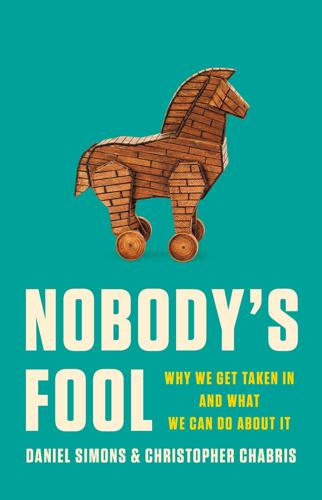
Nobody's Fool: Why We Get Taken in and What We Can Do About It
by
Daniel Simons
and
Christopher Chabris
Published 10 Jul 2023
In fact, people can and do become infected with less than fifteen minutes of exposure. Fifteen minutes is an arbitrary but practical threshold for contact tracing, as people who test positive are likely to remember whom they were around for fifteen minutes or more and may be able to report their names. However, they’re unlikely to remember the clerk who checked them out at a store or which coworkers they passed in a hallway.9 We can’t calculate “hours of protection” by multiplying the filtration level by the cutoff used for contact tracing. In fact, we can tell that the numbers are nonsense based on other knowledge we already have. Many other factors contribute to transmission risk: whether we’re outdoors or in an enclosed space, whether a room is ventilated, whether people are yelling at the top of their lungs or sitting quietly, whether the infected person is at peak infectiousness, and so on.
…
We previously discussed how Benford’s law revealed minor tax cheating: People were more likely to report an income just under a $50 cutoff than slightly over it if that meant reducing their taxes by a tiny amount. Similarly, the CDC undoubtedly knew the fifteen-minute cutoff for contact tracing would leave some people who were at risk of Covid-19 infection uninformed of their risk. But some standard must be established in order for contact tracing to be feasible, and some people will subvert the intent of any standard. For example, schools in Billings, Montana, shuffled student seating arrangements every fifteen minutes, avoiding the CDC threshold but possibly increasing the likelihood of spread within classrooms.20 Establishing new rules to prevent cheating can start an upward spiral of regulation.
…
In reality, the campus had 3,923 cases by late November, averaging nearly 40 new cases per day. Unlike the White House’s cubic model, the university’s models were mathematically rigorous—but like the cubic model, the conclusions stemmed from flawed starting assumptions.33 The prediction of a total of 700 cases assumed that undergraduates would comply perfectly with testing and contact tracing and that students would be notified of a positive test result within 24 hours. Not surprisingly for a large public university known for raucous parties, compliance was far less than 100 percent, and during the crucial early weeks of the semester, test results were delayed well over 24 hours. The problem wasn’t with the models.
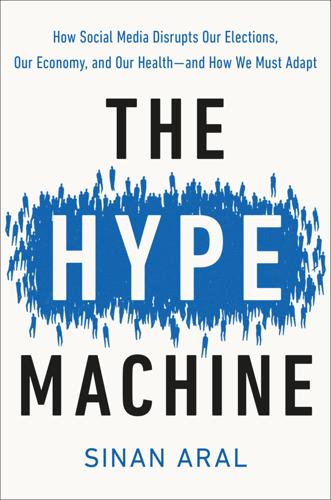
The Hype Machine: How Social Media Disrupts Our Elections, Our Economy, and Our Health--And How We Must Adapt
by
Sinan Aral
Published 14 Sep 2020
cauldron of misinformation: Zeke Miller and Colleen Long, “US Officials: Foreign Disinformation Is Stoking Virus Fears,” US News, March 16, 2020; Brooke Singman and Gillian Turner, “Foreign Disinformation Campaign on Fake National Quarantine Trying to Cause Panic, Trump Admin. Officials Say,” Fox News, March 16, 2020. Google, Apple, and MIT developed Bluetooth-based contact tracing systems: Mark Gurman, “Apple, Google Bring Covid-19 Contact-Tracing to 3 Billion People,” Bloomberg, April 10, 2020; Kylie Foy, “Bluetooth Signals from Your Smartphone Could Automate Covid-19 Contact Tracing While Preserving Privacy,” MIT News, April 8, 2020, http://news.mit.edu/2020/bluetooth-covid-19-contact-tracing-0409. stringent privacy regulations: Thomas Seal and Stephanie Bodoni, “How Europe Is Bumping Against Privacy Laws in Coronavirus Battle,” Bloomberg, April 4, 2020.
…
Privacy debates took on new meaning during the COVID crisis as the threat of “surveillance capitalism” morphed into lifesaving “disease surveillance.” Facebook wasn’t surveilling for profit during COVID; it was filling gaps in inadequate national disease surveillance programs with scalable symptom surveys that identified the pandemic’s spread. At the same time, Google, Apple, and MIT developed Bluetooth-based contact tracing systems that would alert users who opted in if they had come in close physical proximity to the Bluetooth-enabled device of a COVID carrier. Privacy advocates listened in horror as the tech giants swore the system would remain anonymous. The perils of social media surveillance for privacy were sharply contrasted with the promise of social media surveillance for health.
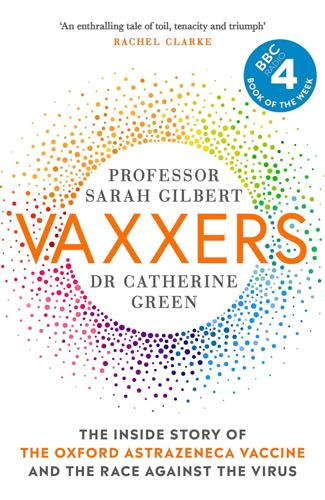
Vaxxers: The Inside Story of the Oxford AstraZeneca Vaccine and the Race Against the Virus
by
Sarah Gilbert
and
Catherine Green
Published 7 Jul 2021
The disease spread, eventually infecting 8,000 people from twenty-nine countries and causing 774 deaths. There was no vaccine or specific treatment and around 10% of those infected did not survive. Vaccine development got underway, but it didn’t get far before the disease had been contained and eradicated by the centuries-old but very effective methods of contact tracing and quarantine: find the cases, identify their contacts, and keep the contacts in quarantine until it is known that they are not infected. The outbreak had started in November 2002 and was all but over by June of 2003. There was no immediate need for a vaccine, although we couldn’t be certain that there would never be another outbreak of SARS.
…
What they discovered was that even young healthcare workers had become infected and, despite having very mild, almost asymptomatic infections, they had been able to spread the disease to others. This made MERS quite different from SARS – with SARS infected people always had recognisable, often severe symptoms, making the job of contact tracing and quarantine somewhat easier. While SARS has been eradicated, MERS continues to cause infections in the Middle East to this day. To try and keep infections down, the Riyadh camel market has now been moved well away from the city, as I discovered myself when I visited it with Naif Alharbi, a Saudi former student of mine.
…
After a few days, though, this can progress to vomiting and diarrhoea, problems with the liver and kidneys, and internal and external bleeding. It’s a truly devasting disease: it is fatal in around 40–50% of those infected. Before 2014, outbreaks had been small, in isolated areas with low population densities, so it had been possible to contain them through painstaking contact tracing and quarantine. What was different in 2014 was that the outbreak spread to densely populated cities, and across borders, from Guinea in West Africa to the neighbouring Liberia and Sierra Leone. As the disease spread exponentially in the summer and early autumn that year, the healthcare system was overwhelmed and people were dying, untreated, in the streets of Monrovia, Liberia’s capital city.

Betrayal of Trust: The Collapse of Global Public Health
by
Laurie Garrett
Published 15 Feb 2000
Scarce had identified more than 150 list servers on the Internet dedicated to barebacking. In 1999, Ron Stall said, the “$100,000 question” is whether gay culture had entered a radically new paradigm that called for dramatically different approaches to disease prevention.744 So how would the CDC’s detuned ELISA contact tracing plan figure into such a picture? Scarce predicted that “a war is coming between gay men and public health if they do contact tracing.” As the twentieth century neared its close, it looked as if HIV would, indeed, follow the sorry courses of MRSA, VRE, multidrug-resistant tuberculosis, and chlorine-resistant microbes in drinking water. Three different research teams published proof in 1999 that drug-resistant strains of HIV were spreading among sexually active people in the United States and Europe.745 The findings raised deeply troubling reservations about both HAART and the future of public health control of the epidemic.
…
L., 300–1, 307, 312 Portnoy, Daniel, 520–21 Porton Down facility, Britain, 74 poverty conservative politicians and, 328, 383–84, 389–92, 439 death rate and, 587 defined, 429, 560 disease and, 11, 47, 103–4, 307–8, 348, 430, 432, 708, 726–27 global, 6, 103–4, 561–63 Great Depression and, 309–15 homelessness and, 574 immigrants and, 285–87, 293, 298–99 immunization and, 417–18 and infant mortality, 555 Medicaid and, 348–50 moral indignation and, 308, 413 War on Poverty, 343–44, 366 wealth gap, 47, 56–57, 201, 307, 384, 554, 561, 581–83, 747–52 WHO and, 334 Pozorovskii, Sergei, 126–28, 253 Preston, Richard, 72 prevention, as basic tenet, 11 privacy contact tracing vs., 480, 483 media vs., 85–87, 94, 98–99, 600 safety vs., 12, 48, 548–49, 601–2 Priymak, Alexey, 190, 194–95, 197, 201 Prohibition, U.S., 305–6, 619 prostitution HIV and, 212, 218, 226–30, 407 levels of, 234 STDs and, 227–35, 265 protein structure, study of, 336 Proteomics, Age of, 569–71 Prudden, T. Mitchell, 296–97 public health accountability in, 461–62 advocacy vs., 587 arbitrary powers in, 300 biowarfare and, 488, 494–95, 503–7, 527–43, 546–50 birth of, 2–3, 10–12, 282–302, 552 catastrophes, trends in, 103–4, 577–79 contact tracing model in, 326, 480, 483 cost-benefit rationale for, 675 diminishment of, 8–9, 12, 22–24, 37–38, 46–47, 73–74, 276–82, 285, 310, 366, 380–89, 439–40, 447, 462–63, 464, 566–67 economics and, 6–7, 11–12, 164–65, 168–69, 191, 262, 586 education and, 402–3, 407, 409, 414 empirical basis for, 296–97, 336 federalization of, 303, 310, 313–14, 317–18, 419, 461–62 forecasting and, 586–87 germ theory and, 295–304 global needs of, 2–3, 6–11, 48–49, 103–4, 463–64, 469, 562–63 global state of, 551–91 Great Depression and, 309–11 hand washing and, 241–42, 274, 288, 292, 310, 654 human rights and, 600 immunization and, 178–79, 288 indicators of, 2, 10, 13, 294, 562–63 institutionalized medicine, 327–29 media and, 97 medicalized model of, 581–84, 586 medicine vs., 8–9, 10, 11, 37, 313, 346–50, 363–66, 375, 397, 426, 428–29, 431, 433–34, 441, 473, 654 middle class and, 286, 294, 298, 560–61, 649–53 mission of, 6–10, 287, 334, 335 and national security, 436–37 nationwide needs of, 8–9 negative image of, 7, 325 personal responsibility for, 391–97, 427, 440–41 politics and, 7–8, 9, 49, 88, 263–64, 286, 296, 405, 567 poverty and, 8–9, 104, 298–99, 329–30, 417, 581–83 preventive measures in, 266, 291, 295–97, 345, 428–29, 570–71 privatization of, 460–63 profitability and, 284–85, 329, 378, 430, 461–62, 470 as purchasable, 421 race and, 415–16, 421, 566, 570 scope of, 8, 10, 334 social status and, 262, 309–10, 431 surveillance in, 35–37, 104, 371, 398–400, 434–36, 454, 469, 597 top-down policies of, 291 as trust, 48–49, 564 universal coverage, 431, 441 wealth and, 430–31 Public Health Act (1848), 288 Public Health Service, U.S.
…
And when supplies ran short, army doctors discovered that even the unmeasurable quantities of the drug that had passed into the urine of a treated patient could be used to cure another.161 Within months of Mahoney’s discovery of the utility of penicillin in syphilis treatment, the New York City health department opened a special VD ward at Bellevue Hospital and distributed free penicillin to doctors and hospitals city-wide. The city also instituted contact tracing policies under which all syphilitic and gonorrheal patients were pressured to name their recent sexual contacts, who were subsequently tracked down, interrogated, and treated. When necessary, either because the contact’s full name wasn’t known or the individual refused treatment, officers of the New York Police Department were deployed.

Blindside: How to Anticipate Forcing Events and Wild Cards in Global Politics
by
Francis Fukuyama
Published 27 Aug 2007
The SARS experience has helped establish a new norm of behavior: the duty to report. Response The world’s response to SARS may seem another source of comfort: the SARS outbreak did not become a pandemic. But SARS had characteristics that made control by the old-fashioned methods of quarantine and contact tracing easy. Persons with SARS showed symptoms, and became very ill, before they became infectious. Quarantine was thus effective in stopping transmission. And because the disease also had a lengthy incubation period, the people with whom infected persons had been in contact could be traced and isolated before they became ill and could infect others.
…
See also Information technology Conant, James, 60 Confidence: in East Asian economic crisis, role of, 43, 46–47, 48; policymakers’ display of, 111; in U.S. national power, 159 Congress, U.S.: on East Asian economy, 49; on energy innovation agency, 67, 68; on ethanol, 79; and scientific innovation, 69 Connected science, 61–63 Consumerism, 133 Contact tracing, of SARS, 87 Containment policy: toward Soviet Union, 31, 116; toward U.S., 108 Conventional wisdom, strategic surprises challenging, 94, 95 Convergence, in information technology innovations, 123–25 Corn, ethanol from, 78–79 Cost-benefit analysis: definition of, 14–15; future in, 15, 16, 18–19; inverse, 16–17; limitations of, 14–19, 171; need for, 4; tolerable windows in, 17–18; uncertainty in, 16–18; value of life in, 15–16 Credit Lyonnais Securities Asia, 43 Creutzfeldt-Jakob disease, 83–84 Cuban missile crisis, 64 Cultural barriers, to preparing for catastrophes, 13–14 Cultures, capacity for adaptation in, 154–55 Currency devaluation, in East Asian economic crisis, 43, 44, 47–48 Currency undervaluation, in East Asian economic crisis, 44, 47, 49 Cyber-nations, 156–57 DARPA (Defense Advanced Research Projects Agency), 57–70; creation of, 63; innovation organization at, index 63–67; lessons learned from, 59–60; as model for energy dilemma, 59–60, 67–70; precursors of, 60–63; rise of, 63–65 Darul Islam, 144 Data collection, filters in, 99–100 Day after Tomorrow, The (film), 105, 140 Debt, private, in East Asian economic crisis, 44–45, 46, 48 Debt of Honor (Clancy), 93 Defense, Department of, DARPA’s work with, 64–65, 68 Defense Advanced Research Projects Agency.

Age of the City: Why Our Future Will Be Won or Lost Together
by
Ian Goldin
and
Tom Lee-Devlin
Published 21 Jun 2023
Lockdowns are a vital tool for reining in uncontrolled transmission, but experience with Covid-19 shows that they cause immense hardship and economic damage. Contact-tracing technology, which proved woefully inadequate during Covid-19 in all but a few countries, needs to be stepped up in advance of the next pandemic. Fears of invasive surveillance can be mitigated by making it transparent what data will be collected, under what circumstances, and how that data will be stored and used. Such improvements to transparency are necessary anyway, as cities gather ever more data on their citizens for uses ranging from policing to traffic management. Enhanced contact tracing needs to be combined with ubiquitous rapid testing that can be ramped up quickly in response to outbreaks.
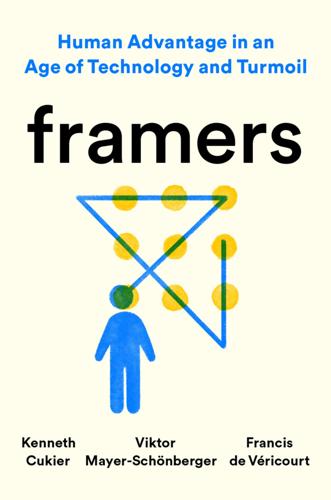
Framers: Human Advantage in an Age of Technology and Turmoil
by
Kenneth Cukier
,
Viktor Mayer-Schönberger
and
Francis de Véricourt
Published 10 May 2021
“We currently have 102 cases—but so did Italy once,” she told the nation in March. The country went into lockdown, closed its borders, and committed to contact tracing every case. Britain, meanwhile, framed Covid as being more like the seasonal flu, and went for a “mitigation” strategy. Health officials assumed that the virus would inevitably spread through the population, eventually creating herd immunity. The government gave up on testing and contact tracing early in the crisis, and was later than its European counterparts to take actions such as banning large public events and closing schools. Officials opted for a national lockdown only after epidemiological models showed that the virus would swamp the National Health Service.
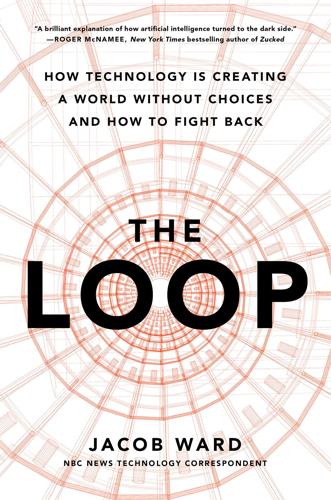
The Loop: How Technology Is Creating a World Without Choices and How to Fight Back
by
Jacob Ward
Published 25 Jan 2022
The involvement of ubiquitous companies like Google and Apple seemed inevitable and inarguable. Meanwhile, I began receiving email after email from companies that claimed to have built contact-tracing systems, because technologically they were relatively simple to build: any company with a location-aware app for following the behavior and location and social connection of its users already had, in theory, the constituent parts to build a contact-tracing system. This was a rare moment in which building surveillance technology was a matter of public interest and public health. Soon a new set of radical surveillance capabilities, largely powered by AI, became public knowledge.
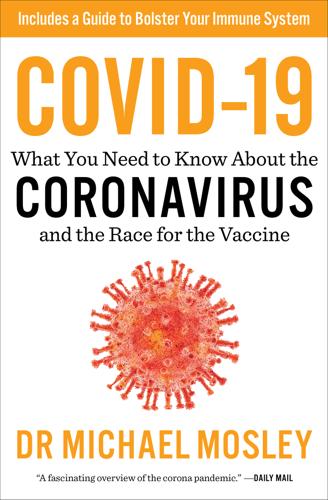
COVID-19: Everything You Need to Know About the Corona Virus and the Race for the Vaccine
by
Michael Mosley
Published 1 Jun 2020
via%3Dihub 34 http://www.ox.ac.uk/news/2019-12-19-new-mers-vaccine-clinical-trial-starts-saudi-arabia 35 https://www.nytimes.com/2020/04/27/world/europe/coronavirus-vaccine-update-oxford.html 36 https://www.ncbi.nlm.nih.gov/pmc/articles/PMC2851497/ 37 https://www.nytimes.com/2020/04/27/world/europe/coronavirus-vaccine-update-oxford.html 38 https://academic.oup.com/jid/advance-article/doi/10.1093/infdis/jiaa152/5814216 39 https://www.nytimes.com/2020/04/30/opinion/coronavirus-vaccine-covid.html 40 https://apps.who.int/iris/bitstream/handle/10665/331976/WHO-2019-nCoV-Ethics_criteria-2020.1-eng.pdf?ua=1 41 https://www.bdi.ox.ac.uk/news/digital-contact-tracing-can-slow-or-even-stop-coronavirus-transmission-and-ease-us-out-of-lockdown 42 https://www.reuters.com/investigates/special-report/health-coronavirus-usa-cost/ This publication contains the opinions and ideas of its author. It is intended to provide helpful and informative material on the subjects addressed in the publication.
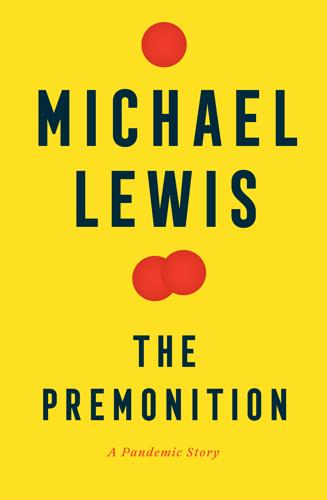
The Premonition: A Pandemic Story
by
Michael Lewis
Published 3 May 2021
“So far we have only identified two examples where disease spread from a traveler (and in both circumstances it was very close contact in the household—a spouse),” he later wrote, then continued: Opening up wider surveillance would seem impractical and unnecessary. This conclusion is correct until it is wrong. The problem I see with this approach is the only way we will recognize community transmission is if a contact tracing of a known case (derived from travel screening) finds an extended chain of transmission. But assuming all is well denies the possibility of disease already in the community, just hidden from sight or diagnosis because of a bit of a Catch-22. We are in the middle of an active flu season. These cases could look similar to and be confused with flu.
…
“That’s what you do in TB control,” Charity said. “The nurses take them to a hotel room and the sheriff watches them. If you think you have a shot at containing it, that’s what you do. You have to do it by health officer authority. People say you can’t do it, but we do it every day for TB.” Japan was doing something clever with their contact tracing. Perhaps from their close view of the Diamond Princess, public-health authorities had figured out early that superspreaders played a far bigger role in the explosion of COVID-19 than in, say, the spread of flu. It wasn’t clear why, but never mind why; why you could worry about later; why the CDC could write a paper about.
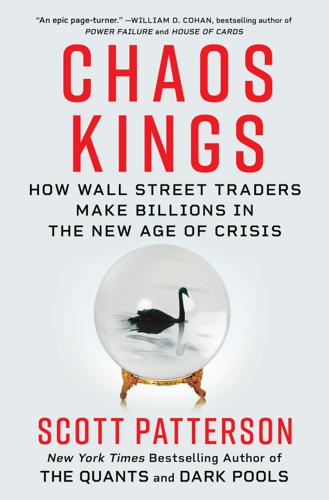
Chaos Kings: How Wall Street Traders Make Billions in the New Age of Crisis
by
Scott Patterson
Published 5 Jun 2023
“The general expectation is that prior experience is a predictor of future events,” he later wrote, describing the research, “but in this case it doesn’t work.” A few months later, the world’s largest outbreak of Ebola erupted in West Africa. Cases were nearly doubling weekly. Public health officials began contact-tracing to contain the disease. But it was ineffective, later analysis of the situation by NECSI showed. For one thing, most people didn’t know at first that they had Ebola, which initially can feel like a regular viral infection. Also, because many people in urban centers of West Africa share cabs, it was often impossible to know who sick people had been in contact with.
…
Finally, as the disease spread exponentially, the ideal number of contact tracers rose to a number that was logistically impossible. Some of those tracking the Ebola outbreak feared that 10 million people might die in Africa alone. Bar-Yam and his colleagues at NECSI began crafting an alternative response as it became clear that contact-tracing wasn’t working. They focused on intervening at the community level, restricting travel in discrete areas where infections popped up, and actively seeking out infected people through door-to-door canvassing. Such an approach would squeeze the virus until it could no longer spread at all, or so they hoped.
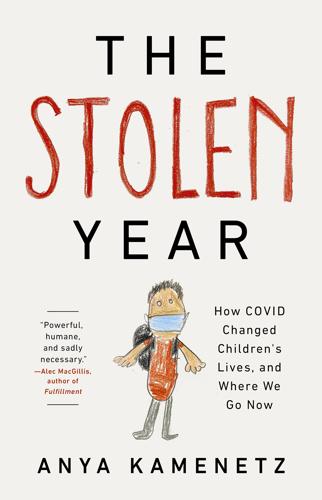
The Stolen Year
by
Anya Kamenetz
Published 23 Aug 2022
A set of safety measures—masks, distancing, handwashing—were immediately improvised where necessary, such as in childcare centers that kept operating for essential workers. Experience showed that these measures reduced spread in settings where children were gathered and that compliance could be good even among young children. These guidelines were quickly adopted by the Centers for Disease Control and Prevention (CDC). Our contact tracing was never what it should have been, but evidence mounted around the world that schools and childcare facilities could actually be operated more safely than other types of indoor gathering places like bars, restaurants, factories, or gyms—usually, when these measures were followed, with fewer cases than in the surrounding community.
…
Partly it was because cases were growing; it was hard to detect the signal from school reopening in the rumble of another COVID wave. Florida, with its open schools, became a national hotspot. Later, California, with closed schools, led the ranks. New Jersey, during the time that it had the highest death rate in the nation, was a purple state with closed and open districts cheek by jowl. Without effective and reliable contact tracing, enough testing, or other large-scale data collection, nobody had great real-time information about whether, where, and why schools in the United States were really driving the spread of COVID. There were reassuring studies from other countries, but the data was limited. “We’re driving with the headlights off, and we have kids in the car,” Melinda Buntin, chair of the Department of Health Policy at Vanderbilt School of Medicine, told me for NPR in October 2020—though she still argued on balance in favor of opening schools, with precautions.

Making It in America: The Almost Impossible Quest to Manufacture in the U.S.A. (And How It Got That Way)
by
Rachel Slade
Published 9 Jan 2024
She rolled over to silence it, let it go to voice mail. Ben pulled her in close, but who were they kidding? An early morning call couldn’t be anything but bad news. They enjoyed their last few moments of blissful ignorance, then Whitney got up, made coffee, and listened to the message. It was from their production manager, Amy. Contact tracing revealed that an employee had been in close proximity with someone who’d tested positive for Covid. Amy assured Whitney that the employee in question had stayed home, but half of the individual’s family had worked in the factory that day. Maybe they’d dodged a bullet. But Ben and Whitney’s vacation was over.
…
There was fear, Whitney says, but it was contained. By Sunday, two more employees tested positive. American Roots was officially experiencing an outbreak. Maine CDC officials recommended the company implement staff-wide testing, which they did on July 14. The next evening, the Waxmans learned they had eight additional cases, all mild. Contact tracing identified several more employees who might have had contact with those infected, and American Roots kept them home with pay. Eighty-six people returned to work; twenty-one stayed in quarantine. “Here we were doing everything we could to keep staff safe,” Whitney says, “and we realized that, as much as you do, the threat is still there.

New Laws of Robotics: Defending Human Expertise in the Age of AI
by
Frank Pasquale
Published 14 May 2020
And many of its jurisdictions have expanded the data potentially included—everything from how a person crosses the street, to how they treat their parents, to their degree of patriotism and loyalty to the Communist Party and its teachings. Social credit scoring and its many Western analogues have been enormously controversial, and it is unclear how far they will develop. To be sure, some applications of these systems may be quite valuable. It is hard to complain about public health surveillance that accelerates contact tracing to stop the spread of infectious disease before a pandemic starts. But when the same powerful capacities are ranking and rating everyone all the time, they become oppressive. The chief danger of social control via AI is a world of regimentation. Conflict and competition are part of life, and we should expect technological advance to inform them.
…
See also unions colleges and universities: aims of, 63–64; for caregivers, 192; citizens entitled to four years of, 175; content of (intrinsic vs. instrumental), 178–179; costs of, 85, 87; evaluation in, 141–142; for-profit, 134; free, 135; making students “robot-proof,” 173–174; online, 84–86; STEM training at, 173. See also student debt conspiracy theories, 94, 98, 113 consumer protection, 15, 58, 201; and deceptive marketing, 102 contact tracing, 11 content moderation, 91, 95, 96, 107, 117–118 copyright infringement, 165 coronaviruses. See COVID-19 pandemic; pandemics “cost disease,” 171–172, 186–190, 196, 198, 299n68 COVID-19 pandemic, 100, 166, 191, 194; and data deficiencies, 243n3; and essential workers, 172–173; preparedness for, 159–160, 184–185; and recovery of jobs, 185–186, 195; and universities, 62 Crary, Jonathan, 217 credit and credit scoring, 10, 30, 131–136, 140, 282n83.
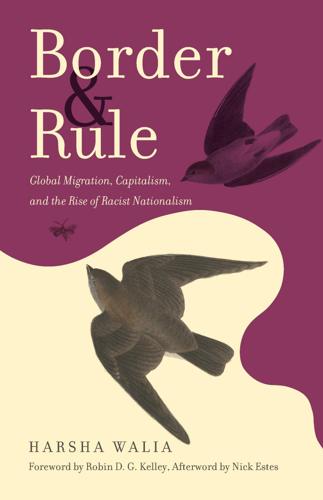
Border and Rule: Global Migration, Capitalism, and the Rise of Racist Nationalism
by
Harsha Walia
Published 9 Feb 2021
Elders have taken with them the knowledge of a history that was and a future that could have been—the stories that will not be told. We have holes in our hearts that are quickly filling with a prophetic fire. The colonizers have fallen deeper into their deadly hallucinations of blaming the Chinese, migrants, Indigenous people—everything but the system itself. As we contact-trace the spread of the virus, we can also contact-trace the purveyors of violence all the way up the chain of command. Vijay Prashad has given us the term “Coronashock” to understand the intensifying international class struggle underway: on one side human solidarity, best represented by mutual aid and healthcare workers, and on the other pure barbarism.

The Equality Machine: Harnessing Digital Technology for a Brighter, More Inclusive Future
by
Orly Lobel
Published 17 Oct 2022
Privacy is figured as a woman, an object of the male gaze.”32 Technology can both protect and invade privacy, and at the same time, privacy itself can be an impediment to other rights and liberties. As the Covid-19 pandemic reminded us, privacy can be in tension with safety and accountability. In some circumstances—for example, when a deadly virus is rapidly spreading—we might decide that the benefits from monitoring citizen movement and contact tracing trump privacy concerns. Striking that balance begins at the root: How do we define privacy, and what does it mean to be “protected”? It is up to us all to decide the right mix and balance. But technology can help give us the tools to fine-tune the fine balances we’ve always had to strike in a democratic society.
…
Healthwise, rates of syphilis, gonorrhea, and chlamydia have increased in record numbers over the past few years.17 While some health experts blame dating apps for the rise in infections—by virtue of the sheer volume of connections that can be made quickly through online dating services—we need to study these trends more closely, and contact tracing is difficult when it comes to STDs transmitted through casual encounters. As the Covid-19 pandemic has shown us, not everyone acts responsibly and swiftly to prevent transmitting infectious diseases to others, suggesting that we need to invest more public resources, and leverage technology to counter such reckless behavior.18 Health officials and advocacy groups have called on dating apps to help fight the STD epidemic, but not many apps have been proactive about promoting sexual health.
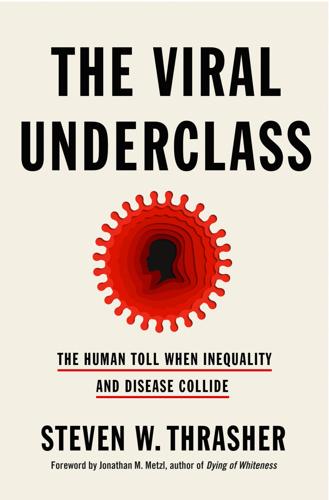
The Viral Underclass: The Human Toll When Inequality and Disease Collide
by
Steven W. Thrasher
Published 1 Aug 2022
In May 2020, the bulk of the country’s second wave of coronavirus infections was traced to a gay club in Seoul’s Itaewon neighborhood; two people at the club had also visited a gay bathhouse. Quickly, even though the gay nightclub and bathhouse were cooperative with contact tracing, blame was heaped upon gay South Koreans for the resurgence. Because the level of the virus was low and the level of contact tracing was high, the cluster was contained. But a twenty-five-year-old man in the cluster who tested positive was arrested for lying to authorities. The exact charge was that while he cooperated in answering many questions honestly, he said he didn’t have a job when, in fact, he worked as a tutor for hire.
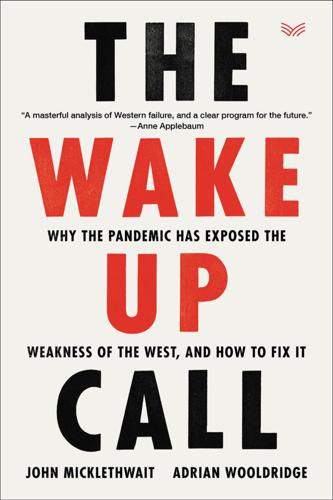
The Wake-Up Call: Why the Pandemic Has Exposed the Weakness of the West, and How to Fix It
by
John Micklethwait
and
Adrian Wooldridge
Published 1 Sep 2020
Health is the most difficult area, not least because British doctors demonize any attempt at reform as privatization. Covid certainly often showed the NHS at its best but it also highlighted problems, including control freakery and poor technology: just try Googling “National Health Service Covid contact tracing App.” Many continental European countries have better health systems, without sacrificing anything in terms of coverage. In continental Europe, Bill Lincoln would probably focus more on pensions and the social spending that Angela Merkel complains about. But he would be struck above all by the poor architecture of the European Union.
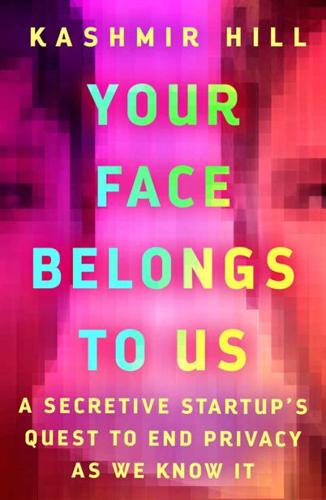
Your Face Belongs to Us: A Secretive Startup's Quest to End Privacy as We Know It
by
Kashmir Hill
Published 19 Sep 2023
Thirty minutes later, police showed up at his door. News reports suggested that he’d been spotted by a facial recognition camera. Were U.S. policy makers also contemplating that level of surveillance of Americans? Were they really considering hiring Clearview to do it? “We can’t let the need for COVID contact tracing be used as cover by companies like Clearview to build shadowy surveillance networks,” Senator Edward Markey tweeted at the end of April 2020 in response to the Journal’s story. “I’m concerned that if Clearview becomes involved in our response to #COVID19, their invasive tech will become normalized, and that could spell the end of our ability to move anonymously in public.”
…
See also pornography China scoring of citizens by, 34 surveillance in, 224–227 Churchill, Winston, 41 CIA (Central Intelligence Agency), 38, 125, 227, 268–269n38 Citizens United, 208, 306n206 Clarifai, 32–33 Clarium Capital, 14 ClassPass, 8 Clearview AI absence of headquarters for, x–xi, xii access requests and, 190–192 ACLU and, 202, 203–204, 205 AR glasses and, 249–250 attempts to shut down communication by, xv, xvii–xviii author’s contact with representatives of, 160–166 bans on, 165 capabilities of, ix–x Capitol insurrection and, 229–230 concerns regarding weaponization and, xv–xvii defense of, 157–159 effectiveness of, xii emergence of, 94 fines assessed to, 193–194, 230 growth of database for, 246–247 hit rate of, 133 international backlash against, 192–193 international expansion and, 137 investment efforts and, 111–120, 136. see also individual investors Johnson and, 95–96 law enforcement and, 128, 130–139 lawsuits against, 165, 204–206, 209–213, 248 Leone and, 113–114 NYT article on, 164–165, 187, 190, 194, 204, 230 opposition to, 237–238 pandemic and, 186–187 police reactions to, xii–xiv potential legal challenges to, 117 push for ethical use and, 239 results blocked by, xvii–xviii, 162–163 Scalzo and, 111–112, 113, 188–189 third-party testing of, 240 tip regarding, vii–viii, ix Ukraine invasion and, 237 wrongful arrests and, 183 Clearview AI Camera, 111 Clearview AI Check-In, 111–112 Clearview AI Search, 111 Clement, Paul attempts to contact, 160 on Clearview AI’s capabilities, ix–x lack of response from, xi legal memos from, 134, 157–158 Clinton, Bill, 209, 259n10 Clinton, Chelsea, 9–10, 259n10 Clinton, Hillary “deplorables” comment by, 50–51 election loss of, 88 facial recognition and, 104 false claims about, 94 Trump and, 16, 52 Cohen, Chuck, 133 Colatosti, Tom, 62, 65, 66, 71 Comet Ping Pong, 55 Computer Fraud and Abuse Act (1986), 117–118 computers early, 36 reliance on, 36 confirmation bias, 181 Constitution First Amendment, 15, 206–207, 208–209, 212–213, 306n206 Fourth Amendment, 141 consumer protection laws, 205 contact tracing, 186 Coolidge, Calvin, 11 Couchsurfing, 81 Coulson, Jennifer, 180–181 Coulter, Ann, 119 Covid-19, 185–187, 209, 214 Crime and the Man (Hooton), 25, 26 CrimeDex, xii, 134 criminal detectors, 31 “criminal face,” 31 Criminal Justice Information Services Division, 299n158 Criminal Man (Lombroso), 22–23, 38 crisis communications, 161 Cruise, Tom, 123 Crunchbase, 79 Cruz, Ted, 11 cryptocurrency, 81 CSAM (child sexual abuse material), 135.
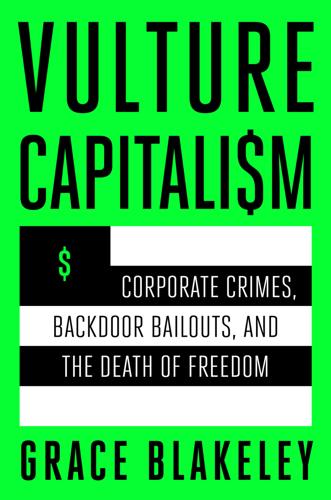
Vulture Capitalism: Corporate Crimes, Backdoor Bailouts, and the Death of Freedom
by
Grace Blakeley
Published 11 Mar 2024
Nicola Habersetzer, “Moscow Silently Expands Surveillance of Citizens,” Human Rights Watch, March 25, 2020, https://www.hrw.org/news/2020/03/25/moscow-silently-expands-surveillance-citizens. 106. “Bahrain, Kuwait and Norway Contact Tracing Apps Among Most Dangerous for Privacy,” Amnesty International, June 16, 2020, https://www.amnesty.org/en/latest/news/2020/06/bahrain-kuwait-norway-contact-tracing-apps-danger-for-privacy/. 107. “France to Use CCTV to Monitor Mask-Wearing on Public Transport,” Privacy International, March 16, 2021, https://privacyinternational.org/examples/4463/france-use-cctv-monitor-mask-wearing-public-transport. 108.
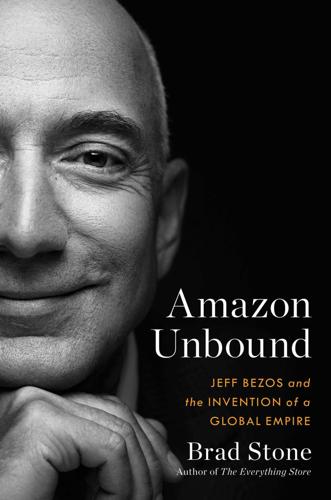
Amazon Unbound: Jeff Bezos and the Invention of a Global Empire
by
Brad Stone
Published 10 May 2021
Eventually, the team settled on a plan that called for notifying all employees in a building, via text messages and robocalls, only after a case had been confirmed through testing. There was further handwringing over how much to reveal about the positive individual’s job and shift in the facility, without violating their privacy or fueling rumors and speculation on social media. The team instituted a plan that involved using warehouse video footage to perform contact tracing. Workers who had been in close contact with the infected individual then received follow-up instructions from HR to quarantine at home, with pay. It was a reasonable solution amid challenging circumstances, but the sheer volume of cases among Amazon workers that spring bred further confusion and frustration among employees.
…
(AMI), 32–35, 337–42, 345, 347 Anagram Genius, 34 Android, 24, 34, 38, 40, 41 Anker, 176–77, 375 A9, 70, 255, 258 Annapurna Labs, 103 antitrust issues, 351–52, 364, 377–78 Amazon and, 9, 10, 174, 307, 351, 353, 363–80, 381, 406 Bezos’s Congressional testimony and, 369–71 Google and, 259, 353, 366, 377 Microsoft and, 363, 378 Antitrust Paradox, The (Bork), 365 AOL, 7 Apollo program, 266, 272 Appen, 43 Apple, 9, 34, 42, 52, 71, 95, 111, 145, 158, 173, 229, 350, 359, 366, 377 Apple News+, 129 iPad, 40, 129 iPhone, 38, 41, 96, 129 Siri, 26, 27, 30, 32, 34 voice technology of, 37, 42 Washington Post and, 129–30 Arc Publishing, 129 Arendt, Hannah, 365 artificial intelligence and machine learning, 13, 22, 23, 36–37, 50, 55, 68 deep learning, 35, 36 see also virtual assistants Asimov, Isaac, 23 AT&T, 378 Atlas Air, 234 Atomic Energy Commission, 266 ATSG, 234 Aubrey, Colleen, 253, 402 automakers, 219 Axel Springer, 124, 281 Axis Management, 327 Bain & Company, 262 Baldwin, Alec, 48 Ballmer, Steve, 94–96, 115 Bansal, Binny, 70, 73–74, 88, 91 Bansal, Sachin, 70, 73–74, 87–91 Barnes & Noble, 6 Barnett, David, 367–68 Baron, Marty, 123, 126–27, 130–32, 154 Barron’s, 12 Bart, Peter, 136 Barton, Bill, 36 BBC, 145 BBN Technologies, 35–36 BDO, 311 Beauchamp, Christine, 402 Beaudoin, Cathy, 180–81 Beck, 136 Beckinsale, Kate, 136 Bell, Charlie, 98, 101, 102 Bellevue, Wash., 304, 305 Bennet, Susan, 30 Berkshire Hathaway, 16, 128, 320, 379 Berman, Craig, 41, 106–7, 120 Betas, 142 Bezos, Christina (sister), 162, 244 Bezos, Jackie (mother), 5, 162, 244, 266, 325 Bezos, Jeff Amazon founded by, 5–6, 322 awards won by, 297, 343 biological father of, 12, 329 childhood home visited by, 161–63, 263 Congressional testimony of, 369–71 divorce of, 16–17, 318–21, 334, 345, 346, 349 fame of, 244, 249, 323, 324 homes of, 132–33, 135, 306, 322, 323, 347, 405 image makeover of, 15–16, 116, 244–45, 323 leadership style of, 10–12, 21–22, 167 musical tastes of, 31 National Enquirer story on Sanchez’s relationship with, 17, 319, 328–42, 344 phone hacking incident, 321, 344–45 portrait of, 1–2, 382 salary of, 112 Sanchez’s meeting of, 326 Sanchez’s relationship with, 17, 283, 318–19, 321, 324, 326–28, 344–47 as science fiction fan, 23, 30–31, 52, 266, 274 shareholder letters of, 6, 12, 22, 24, 39–41, 68, 182, 206, 268, 356, 373–77 60 Minutes interview with, 233 technical advisors to, 23–25, 71 transition to executive chairman position, 17, 405 wealth of, 2, 11, 15, 19, 95, 108, 112–13, 159, 163, 244, 245, 249, 263, 266, 282, 285, 288, 299, 306, 323, 346, 349, 355, 357, 384, 401, 404 Bezos, George, 161–62 Bezos, MacKenzie (wife), see Scott, MacKenzie Bezos, Mark (brother), 162, 244, 245, 322 Bezos, Mike (father), 5, 162, 215, 244, 266, 275, 325 Bezos, Preston, 1, 382–83, 384 Bezos Day 1 Fund, 49, 324, 406 Bezos Earth Fund, 402–4, 406 Biden, Joe, 110, 354–55, 402 Big Billion Day, 78 Big Little Lies, 154 big tech companies, 401 government scrutiny of, 366–67 mergers of, 378 suspicion of and backlash against, 290, 305, 349–53, 364, 380 see also antitrust issues Bill and Melinda Gates Foundation, 403 Bing, 193 bin Laden, Osama, 117, 118 Birkenstock, 180 Blackburn, Jeff, 136, 139, 147, 152, 155–57, 251–53, 322, 402 Black Friday, 84, 104, 105, 226 Black Lives Matter, 395 Black Ops Aviation, 283, 310, 326 Blizzard Challenge, 29 Bloomberg, Bloomberg News, 95, 187, 223, 295, 360 Blue Origin, 16, 17, 120, 130, 244, 245, 264–83, 288, 310, 326, 327, 346, 387, 406 Bezos’s funding of, 278 Blue Moon project of, 279 budget of, 276–77 employees of, 265, 274–76, 278, 280–81 fuel mixes and, 269, 270 Kármán line and, 273, 282 Kent headquarters of, 264, 274–75, 277, 281 motto and coat of arms of, 268 New Glenn rocket of, 264, 272, 274, 277–79 New Shepard rocket of, 264, 267, 269–71, 273, 274, 276, 278, 280, 283, 288, 310, 327 as philanthropic enterprise, 269, 281–82 secrecy at, 268 test rocket failure of, 270 Texas ranch facilities of, 275, 281 Welcome Letter for new employees at, 267–70, 277, 278, 281 Blumenthal, Richard, 214 Boeing, 270–71, 272, 280, 290, 293, 294, 309 Bon Jovi, Jon, 325 Borat Subsequent Moviefilm, 401 Borders, 169, 188 Borders, Louis, 188 Bork, Robert, 365 Bosch, 143 Bourdain, Anthony, 131 Bowden, Courtney, 397 Bowen, Sam, 23 Boyle, Sean, 249 Boys, The, 158, 401 Bradlee, Ben, 133 Branson, Richard, 6 Bray, Tim, 398–400 Brazil, 110, 231 Brennan, Megan, 358 Breuer, Lanny, 368 Brin, Sergey, 359 Brown, Dan, 34 Brownstein, Carrie, 154 Buffett, Warren, 128, 186, 320, 345 burgers, 206–9 Burgess, Tim, 290, 291 Burnett, Mark, 145 Burnett, T Bone, 136 Burnham, John, 149 Business Council, 16 Business Insider, 240 Business Today, 78 Businessweek, 99 Buy Box Experts, 377 BuzzFeed, 154, 237, 240 Bystander Revolution, 323–24, 346 Callamard, Agnes, 345 Campfire, 153–55, 324–25 Canada, 80 Cape Canaveral, 272, 280 carbon emissions, 2–3, 381 Carlson, Teresa, 359, 362 Carnegie Mellon University, 29 Carney, Jay, 110, 118–20, 208, 263, 297, 311, 314, 315, 339, 351, 356, 357, 369, 390, 391 Carr, Bill, 138–40 Carrefour, 190 Catz, Safra, 360 CBS This Morning, 126, 144 CCDev, 270–71 Cengiz, Hatice, 347 Center for Investigative Reporting, 224 Centers for Disease Control (CDC), 394 Chapman, Gary, 64 Charlie Rose, 94 Chatham Asset Management, 331 Cheng, Albert, 157 Chicago, Ill., 303 China, 13, 70–73, 75–76, 78, 82, 86, 95, 104, 170, 189, 379 Communist Party in, 73 Marketplace sellers based in, 171–81, 183, 248, 254, 260, 287 Christensen, Clayton, 10 CIA, 359–60 Cicilline, David N., 366–69, 371, 377 Cincinnati/Northern Kentucky International Airport, 235, 293 Clarkson, Ian, 188 Clarkson, Jeremy, 145 Clancy, Tom, 149 Clark, Dave, 193, 194, 213–18, 221–35, 239–43, 355, 387–89, 392, 397, 399, 402, 405 Clark, Leigh Anne, 217 Clarke, Arthur C., 23 Climate and Clean Energy Equity Fund, 403 climate change, 2–4, 17, 381, 402–4 Climate Pledge, 2, 17, 381–82, 388 Clinton, Hillary, 1 cloud computing, 4, 13, 14, 22, 24, 25, 55, 96–98, 102 Amazon’s original products for, 97 Defense Department’s JEDI contract for, 351, 359–63, 381 see also Amazon Web Services Cloudtail, 77, 88 CNET, 67 CNN, 353 Coca-Cola, 260 Coen, Joel, 135 Cohen, Michael, 331, 335 Collins, Doug, 367 Columbia Pictures, 141 Comcast, 139–40 Comic-Con, 145 Communications Decency Act, 379 computer speech recognition, 28, 36, 55 in Alexa, 28, 33, 36, 37 computer-synthesized speech, 28–29 computer vision, 13, 54–55, 57–58, 62–64, 68 Conscious Capitalism (Mackey), 185 Consumer Financial Protection Bureau, 353 ContextLogic, 171 Cook, Tim, 132, 345, 359, 369 “cookie licking,” 233 Corden, James, 2 Cornell, Brian, 231 Costco, 185, 192, 198 Coulter, Kristi, 60, 65 Covid-19 pandemic, 1, 4, 18, 348, 367, 369, 385–402 Amazon Pharmacy and, 404 Bezos’s public prominence during, 387–88 Bezos’s wealth and, 18, 401 customer demand during quarantine, 380, 387, 388, 391 essential item sales during, 389, 391, 392 face shields and masks during, 388–89 grocery delivery and, 68, 243, 391 labor unions and, 316, 392, 394 S-team and, 386–87, 390 testing and contact tracing in, 390, 396–97, 400–401 vaccines in, 402 Whole Foods and, 390, 391, 397 Covington & Burling, 368 Cox, Braden, 312–14, 316 Crisis in Six Scenes, 13, 149 Crow, Bill, 298 Cruise, Tom, 168 Cucinelli, Brunello, 346 Cunningham, Michael, 154 Cuomo, Andrew, 306, 310, 314–15 Curry, Stacey Hayes, 237 Daily Beast, 336, 342 Dallas, Tex., 292, 295, 296, 299–302, 308 Damon, Matt, 135, 325 databases, 97–99 see also cloud computing Daudon, Maud, 290, 304 Da Vinci Code, The (Brown), 34 Davis, Alicia Boler, 402 Days Inn, 290 Deadline, 136 Dead of Winter Productions, 327 de Becker, Gavin, 64, 323, 334–39, 341, 342, 344, 346–47 de Blasio, Bill, 306, 310, 313–15 De Bonet, Jeremy, 63 Defense Department, U.S., 359, 361 JEDI contract with, 351, 359–63, 381 Deliveroo, 260 Delrahim, Makan, 366 Delta Air Lines, 301 democracy, 124, 133, 365 De Niro, Robert, 152 DePalo, Joe, 102 D.

Breathtaking: Inside the NHS in a Time of Pandemic
by
Rachel Clarke
Published 26 Jan 2021
The government has given up, hasn’t it?’ I don’t know how to answer. Everything I could say would sound platitudinous. Arjun cannot help himself. The words pour out. He can’t sleep, he feels sick, he feels betrayed, he feels abandoned. His final observation is chilling. ‘I cannot understand why they have stopped testing and contact tracing, either. Even hospital staff are being told we can’t be tested if our own symptoms are mild. This is unbelievable. If we’re not allowed to be tested, then how will we ever know how many other people – patients – we are infecting? Brilliant. What a brilliant plan.’ Of this time, David Hunter, Professor of Epidemiology and Medicine at the University of Oxford, will later write in the New England Journal of Medicine: ‘Many clinicians and scientists have been pushing the panic button, but the alarm, if heard, was not acted on publicly . . .
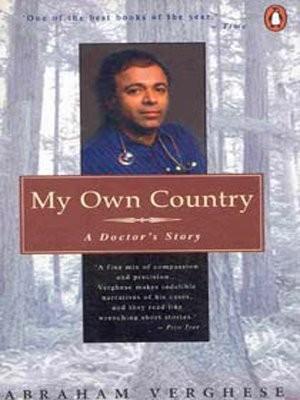
My Own Country: A Doctor's Story of a Town and Its People in the Age of AIDS
by
Abraham Verghese
Published 1 Jan 1994
When I walked into the first meeting at the church, I already knew half the people there from the Rathskeller Student Union building where one corner had become an informal gay corner.” “When you say ‘knew’ them, do you mean knew them sexually?” Fred laughed and said, “Yes, in some cases.” As Fred said this, the picture of a wheel came to my mind: In models of sexually transmitted disease, spread of infection among gay men is often depicted as a wheel. Aggressive contact tracing often establishes that there are multiple cross-links: The “index” case may have had contact with not only the next person in the chain but others farther along; a circle is formed. In a small town the circle is small; in New York City it is larger, but the circle still closes. Gaetan Dugas—identified as “Patient Zero” in Randy Shilts’s And the Band Played On—the handsome, Air Canada flight steward, showed just how large the circle could be: At least 40 of the first 248 gay men diagnosed with AIDS in the United States had sex either with Gaetan or with someone who had.
…
Gaetan Dugas—identified as “Patient Zero” in Randy Shilts’s And the Band Played On—the handsome, Air Canada flight steward, showed just how large the circle could be: At least 40 of the first 248 gay men diagnosed with AIDS in the United States had sex either with Gaetan or with someone who had. By contrast, heterosexual contact tracing resembles the spokes of a wheel: the wheel is so huge that it is practically infinite, with contacts leading linearly away from the index case. The AIDS virus took advantage of, and drew attention to, a level of sexual activity among an exclusive group of individuals in a way that no other sexually transmitted disease had done to that point.

The Code Breaker: Jennifer Doudna, Gene Editing, and the Future of the Human Race
by
Walter Isaacson
Published 9 Mar 2021
Despite the dangers, there could be benefits if biotech followed this route. During a pandemic, it would be useful if societies could tap the biological wisdom and innovation of crowds. At the very least, it would be good to have citizens who could test themselves and their neighbors at home. Contact tracing and data collection could be crowdsourced. Today, there is a sharp line dividing officially sanctioned biologists from do-it-yourself hackers, but Josiah Zayner is dedicated to changing that. CRISPR and COVID could help him blur those lines. Joseph Bondy-Denomy CHAPTER 34 DARPA and Anti-CRISPR Threat assessment The possibility that CRISPR would be used by hackers or terrorists or foreign adversaries began to worry Doudna.
…
Abbott, Tim, 455 Abbott Labs, 430 abortion, 293, 337 Abudayyeh, Omar, 425, 426, 428, 451 ACE2 protein, 404 Achenbach, Joel, 229 ACTN3 gene, 349 adenine, 26, 27 adenoviruses, 438, 456 Advanced Photon Source, 85–86 Aeschylus, 243 Afeyan, Noubar, 442, 447 African Americans COVID vaccines and, 461 as researchers, 461 sickle-cell anemia and, see sickle-cell anemia and skin color as disadvantage, 347–48 Watson’s comments on race, 37, 49, 386–92, 394 Agee, James, 265 AIDS and HIV, 166, 305, 390, 431 He Jiankui’s removal of HIV receptor in embryos, xv–xvi, 251, 303–13, 316–24, 369, 404 sperm-washing and, 305, 322 Alda, Alan, 221 Alexander, Lamar, 328 Alliance of Chief Executives, 116 Altman, Sidney, 44–45, 53 Alzheimer’s, 250, 251, 324, 339, 365 American Association for the Advancement of Science, 268 American Cancer Society, 465 American Masters: Decoding Watson (PBS documentary), 384, 386, 389–90, 392, 393 American Society for Microbiology conference (2011), 119, 127–28 American Telephone and Telegraph Company, 90 Anarchy, State, and Utopia (Nozick), 357–58 Anderson, French, 276 Andreasen, Nancy, 352 Andromeda Strain, The (Crichton), 271 antibiotics bacterial resistance to, 121–22 penicillin, 56, 122 antigen tests, 430–31 APOE4 gene, 251 Apple, 358, 463 “Think Different” ad, 326, 371 Apollo program, 417 archaea, 71–73, 155 Argonne National Laboratory, 85–86 Aristotle, 464 Ashkenazi Jews, 389 Asilomar, 266, 269–73, 278, 286–88, 330, 331 Asimov, Isaac, 13 Aspen Institute, 228 Associated Press (AP), 308–10, 319, 321 AstraZeneda, 439 Atlantic, 281 atom bomb, xvii, 89, 117, 224, 265, 338 atoms, 8 autism, 346 Avery, Oswald, 17 Avoid Boring People (Watson), 386–87 Ax, Emanuel, 388 Azar, Alex, 407–9 babies, designer, 355–56 see also CRISPR babies bacteria, 34, 71–73, 155, 216 antibiotic resistance in, 121–22 cloning genes from, 34–35 E. coli, 71, 72, 74, 98 fruiting bodies formed by, 33 oil spills and, 232 in ponds, 402 Streptococcus pyogenes, 122, 139, 182 Streptococcus thermophilus, 91, 182 in yogurt starter cultures, xviii, 90–92, 133, 143 bacteriophages (viruses that attack bacteria), see phages Baltimore, David, 270, 272, 282, 287–88, 293, 330 at International Summit on Human Genome Editing, 315, 321, 323, 324 Bancel, Stéphane, 442 Banfield, Jillian, 78, 79, 97, 402, 472 Doudna invited to work on CRISPR by, xviii, 77, 79–80, 81, 93, 471 Bannister, Roger, 326 Bardeen, John, 90 Barnabé, Duilio, 395 Barrangou, Rodolphe, 88, 90–93, 143–46, 148, 149, 177, 178, 213, 217, 220, 223, 309, 470 Bayh-Dole Act, 232 BBC, 386 Beagle, HMS, 11–12 Beam Therapeutics, 461 Beckinsale, Kate, 219 Beijing Review, 301 Bell Labs, 89–90, 201 Belluck, Pam, 307 Berg, Paul, 98–100, 153, 232, 287–88, 330 at Asilomar, 266, 269–73 Watson and, 271 Berkeley, University of California at, 64–65, 114, 115, 117, 397 COVID and, xiii-xv Doudna at, xiii–xv, xvii, 64–65, 83, 98, 101, 107 Doudna and Charpentier’s patent with, 207–8, 210, 219, 224, 233–40 Doudna’s lab at, 103–11, 104, 117 Isaacson learns to edit at, xiv, 378, 379–83 entrepreneurship and, 115–16 Haas School of Business, 115 Innovative Genomics Institute, 248, 261, 380–82, 401–3, 456 COVID and, 401–5, 413–18, 419 Berkeley Fire Department, 406, 418 Berkeley National Laboratory, 64, 87, 117, 456–57 Better Than Human (Buchanan), 310 Biden, Joe, 465 Bill and Melinda Gates Foundation, 118, 248, 439 biochemistry, 18, 29–35, 51, 80, 183, 201, 478 bioconservatives, 267–69, 280 Biogen, 206 biohacking, 253–57, 263, 285, 288, 443–44 biology, 8, 133, 183, 474 bringing into the home, 432–33, 445, 460 central dogma of, 44, 47, 270 public interest in, 460, 473 structural, 18, 51–53, 80, 166 BioNTech, 435, 441, 445, 447 Bio-Revolution and Its Implications for Army Combat Capabilities, The (conference), 262–63 biotechnology, 64, 98–100, 113–15, 153, 211, 232, 461, 477 Asilomar and, 269–73 commercial development of, 288 crowdsourcing and, 256–57, 285 moral concerns about, see moral questions patents in, 232 regulation of, 270, 278, 281 utopians vs. bioconservatives and, 267–69 see also genetic engineering bipolar disorder, 177, 327, 352–53 Bishop, Kevin, 461 bits (binary digits), xvii, 28 Bitterman, Kevin, 209–10 Black Death, 447 black markets, 291 blindness, xviii, 250 Blue Room meeting, 206, 207 Bohr, Niels, 224 Bondy-Denomy, Joseph, 258, 260–61 Borgia, Cesare, 259 Boston Globe, 291 Bourla, Albert, 447 Boyer, Herbert, 96, 98–100, 153, 232, 266, 270 Bragg, Lawrence, 20, 23, 26 brain, 167, 207 experience machine and, 353 Brannigan, David, 418 Brave New World (Huxley), xv, 267, 269, 280, 281, 353, 358–59 Breakthrough Prize in Life Sciences, 219–21 breeding, 11, 12, 14 Brenner, Sydney, 266, 272 Brigham and Women’s Hospital, 410 Brin, Sergey, 219 Britain, 278, 294 Medical Research Council in, 26 Nuffield Council in, 293, 294 Parliamentary and Scientific Committee in, 333 Royal Society in, 292 Broad, Eli and Edythe, 175 Broad Institute of MIT and Harvard, xv, 64, 144, 160, 175–78, 187, 189, 192, 206, 330, 388, 425, 450, 453, 461 COVID and, 410–11, 429 founding of, 175 Lander as director of, 64, 144, 160, 175, 216, 220, 223, 225–28 Zhang at, xv, 159, 161, 177, 179, 184–86, 189, 374, 421, 423, 424, 450–51, 454 Zhang’s patent with, 192, 207–8, 210–11, 219, 224–27, 233–40 Brouns, Stan, 84 Brown, Louise (first test-tube baby), 274, 313, 328 Buchanan, Allen, 309–10 Buchman, Lauren, 284–86 Burger, Warren, 232 Bush, George W., 280 Bush, Vannevar, 89, 117 calculus, 159 California Institute for Quantitative Biosciences (QB3), 116 Caltech, 270 Cambridge University Cavendish Laboratory, 20–23, 26 Camus, Albert, 399 cancer, xviii, 100, 177, 259, 339, 365, 441, 442 CRISPR and, xviii, 249–51 Canseco, José, 349 Carey, Mariah, 352 Caribou Biosciences, 113–18, 203, 207–8, 213 Intellia Therapeutics, 213 CARMEN, 453, 460 Carroll, Dana, 185 Carter, Jimmy, 273 CARVER, 452–53, 455–57 “Case Against Perfection, The” (Rawls), 281 “Case for Developing America’s Talent, A” (study), 164 Cas enzymes, see CRISPR-associated enzymes Casey Eye Institute, 250 Cassidy, Bill, 328–29 Cate, Andrew, xiii, 62, 63, 97, 101, 114, 132, 199, 209, 328, 368, 402, 465, 468, 470 Cate, Jamie, xiii, 56, 57, 60, 62, 63–64, 97, 101, 114, 199, 381, 402, 422, 424, 468, 470, 472 Jennifer’s marriage to, 63 Cavendish Laboratory, 20–23, 26 CDC, 407–10 CDKN1C gene, 349–50 Cech, Thomas, 44–45, 49, 53–56 Celera, 39, 40 Cell, 143, 146, 376 Lander’s “Heroes of CRISPR” piece in, 182, 223–29, 388 Cell Reports, 143 Centers for Disease Control (CDC), 407–10 Chan, Priscilla, 472 character, 345–46 Chargaff, Erwin, 273 Charité, 124 Charles, Prince, 100 Charo, Alta, 288, 316 Charpentier, Emmanuelle, 119–28, 120, 129–32, 130, 138, 147, 204, 214, 283, 292, 330, 385, 477 Breakthrough Prize in Life Sciences awarded to, 219–21 Church and, 206 Church’s email to Doudna and, 173, 197 company formations and, 205–7, 209, 213 CRISPR Therapeutics, 207, 213, 245, 465 CRISPR paper of (2011), 125–27, 131, 147, 179–80, 185, 218 CRISPR paper written by Doudna and (2012), 126, 137–41, 144–46, 148, 149, 156, 172–73, 179, 180, 182–86, 191, 192, 194–95, 202, 227, 233, 237–38, 374–75 CRISPR paper written by Doudna and (2014), 215 CRISPR patent of Doudna and, 207–8, 210, 219, 224, 233–40 Doudna’s collaboration with, 135, 140, 160, 183, 199–200, 206, 215–21, 464–67, 475 Doudna’s meeting of, 119, 122, 127–28, 200 Doudna’s rift with, 215–21, 464, 466 Gray and, 247 Jinek and, 128 Kavli Prize awarded to, 221 Lander and, 220, 223–24 Lander’s “Heroes of CRISPR” and, 223–29, 388 media and, 216 Nobel Prize awarded to Doudna and, xix, 468, 469–73 Novak and, 122, 205–7, 213 proprietary feelings about CRISPR-Cas9, 216 tracrRNA work of, 124–27, 131, 217–18, 225 Chase, Leah, 479 chemistry, 8, 19 biochemistry, 18, 29–35, 51, 80, 183, 201, 478 Doudna’s study of, 31–34 Chen, Janice, 420, 421–24, 429–32, 451, 460 Chernobyl disaster, 262 Chez Boulay, 376 Chez Panisse, 140–41, 145 chimpanzees, 438 China, 294–95, 300, 427 Academy of Sciences in, 292, 319 cancer treatment in, 249 COVID in, 263, 403, 452 editing of nonviable embryos in, 288, 290 genetic engineering in, 301 germline editing prohibited in, 292, 317 SARS outbreaks in, 65, 403 South University of Science and Technology in, 300–301 cholesterol, 251 Choudhary, Amit, 260 Church, Gaylord, 170 Church, George, 40–41, 48, 158, 160, 167, 168, 169–74, 211, 212, 228, 262, 291, 360, 385, 470, 472, 474 Charpentier and, 206 childhood of, 170–71 company formations and, 203–6, 208, 209, 213 in competition to adapt CRISPR into tool for gene editing in humans, 64, 160, 173–74, 192–95, 197–99, 201, 202 Cong and, 177, 178, 192–94 CRISPR paper of, 192, 194–95, 197, 199, 201, 202 CRISPR paper sent to Doudna by, 197, 234 DARPA grant received by, 260 Doudna on, 172–74 at Duke, 171–72 email to Doudna and Charpentier, 173, 197 germline editing and, 291, 292, 303 Happy Healthy Baby and, 286 at Harvard, 172 Lander and, 172, 227–28 Lander’s “Heroes of CRISPR” and, 225–26 Neanderthal idea of, 205 Personal Genetics Education Project of, 220–21 prizes and, 220–21 woolly mammoth project of, 160, 169, 172 Zayner and, 255 Zhang and, 167, 174, 175, 178, 192–94 Chylinski, Krzysztof, 125, 128, 129–31, 130, 135, 142 CRISPR conference presentation of, 141, 147–48 CRISPR paper and, 137, 140 citizen involvement in science, 263, 445 Clapper, James, 259 Clinton, Bill, 39–40, 309 cloning, 34–35, 98, 153, 280, 313, 415–16 codons, 190, 191–92, 194 cognitive skills, 354, 376 intelligence, 354, 360–62, 376 Watson’s comments on, 385–87, 389–90, 392, 397 memory, 354 Cohen, Jon, 316 Cohen, Stanley, 98, 153, 232 Cold Spring Harbor Laboratory, 37–38, 48–49, 53, 271, 298, 385–91, 458 Blackford Bar at, 462–63 CRISPR conferences at, 302, 304, 385, 391, 393, 397, 415, 458, 459–67 founding of, 37, 463 Watson as director of, 37 Watson disassociated from, 386, 387, 390 Watson portrait at, 302, 384, 386, 390, 396 Collins, Francis, 36, 39–40, 294, 325, 329–31, 364, 390, 446 Columbia University, 98 Comfort, Nathaniel, 226–27 computers, xvii, 117, 163–64, 256, 358–59, 432 hacking of, 263 internet, xvii, 117, 262, 359 software, 432 open-source, 163, 256 Cong, Le, 177–78, 184, 192–94 Congress, U.S., 290–91, 294, 325, 328–29 Constitution, U.S., 231 contact tracing, 257 Conti, Elena, 84–85 continuum conundrum, 337–38 Copenhagen (Frayn), 224 Coppola, Francis Ford, 352 coronaviruses, 47, 90, 270, 339, 365, 451 CRISPR systems to detect, 118 name of, 404 PAC-MAN and, 454–57, 460 RNA of, 65, 403–4 RNA interference and, 66–67 SARS, 65, 403, 441 SARS-CoV-2, 403–4 see also COVID-19 pandemic coronary heart disease, 251 Costolo, Dick, 219 Council of Europe, 278 Count Me In, 177 COVID-19 pandemic, xiii, xv, xvii, 251, 257, 262, 335, 373, 399–475, 477 Berkeley and, xiii–xv Innovative Genomics Institute, 401–5, 413–18, 419 China origin of, 263, 403, 452 Cold Spring Harbor conference and, 459–62 CRISPR cures and, xviii, 449–57 PAC-MAN, 454–57, 460 deaths in, 404, 449 legacies of, 473–75 SARS-CoV-2 in, 403–4 testing and, xiv–xv, 405, 406, 407–11, 413–18, 427–33 antigen tests, 430–31 Broad Institute and, 410–11, 429 CDC and, 407–10 CRISPR and, 413, 417, 421–25, 427–33, 453 Fauci and, 410 FDA and, 407–10 first person in U.S. to test positive, 407 Mammoth Biosciences and, 423–25, 429–32 PCR tests, 408, 413, 416, 421, 425, 428, 430 Sherlock Biosciences and, 428, 430 Trump administration and, 411 University of Washington and, 409–10, 415 Zhang and, 421, 427–32 vaccines and, 434, 435–47, 449 clinical trials of, 435–36, 440–41, 445–46, 461 Fauci and, 442 FDA and, 446 Isaacson in trial of, 435–36, 440–41, 445–46 cowpox, 436 Crichton, Michael, 271 Crick, Francis, 20–28, 47, 166, 389, 475 at Asilomar, 269 on central dogma of biology, 44 in DNA double-helix structure discovery, xviii, 7, 11, 26–28, 29–31, 46, 51, 58, 159, 423, 470 with DNA model, 16 Franklin’s work and, 25, 26 Nobel Prize awarded to, 28, 470 Watson’s meeting of, 20 CRISPR (clustered regularly interspaced short palindromic repeats), 69–149, 449–50, 477, 480 anti-CRISPRs, 260–61 as bacterial immune system, xiv, xviii, xix, 67, 86, 87 Banfield’s enlistment of Doudna to work on, xviii, 77, 79–80, 81, 93, 471 Barrangou and Horvath’s work on, 90–93, 143–44, 177, 178, 220, 223, 470 diagram of mechanism of, 133 discovery of, 71–77 DNA targeting in, xiv, xviii, 67, 76–77, 86, 87, 93–94, 106, 111, 131, 132, 133, 146, 217 Doudna’s creation of team for studying, 103–11 enzymes in, see CRISPR-associated enzymes in vitro vs. in vivo studies of, 80, 94–95, 183, 191, 202 Koonin’s study of, 76–77, 80, 92 and linear model of innovation, 90 Mojica’s study of, 71–76, 80, 91, 92, 220, 223, 224, 470, 479 naming of, 73 RNA in, 79, 108, 133 Cas13 targeting of RNA, 423–25, 429, 451, 452, 454–57 CRISPR RNA (crRNA), 86, 106, 124–26, 131–35, 137–39, 143, 146, 147, 180, 184, 186, 217 RNA interference, 77, 79, 93 single-guide RNA (sgRNA), 134–35, 139, 186, 190, 191, 195, 198 trans-activating CRISPR RNA (tracrRNA), 124–27, 131, 134, 135, 139, 146–47, 179–80, 182, 184–86, 217–18, 225 viruses’ disabling of, 260–61 yogurt starter cultures and, xviii, 90–92, 133, 143 CRISPR applications, 243–63 affordability of, 247–48 biohacking, 253–57, 263, 285, 288, 443–44 coronavirus testing, 413, 417 cures for viral infections, 449–57 CARVER, 452–53, 455–57 PAC-MAN, 454–57, 460 defense against terrorists, 259–63 diagnostic tests for cancers, 250 diagnostic tests for viruses, 115, 118, 421–25, 431–32, 451 at-home tests, 430–32, 460 coronavirus, 413, 417, 421–25, 427–33, 453 HPV, 422–23 ex vivo and in vivo, 246, 250 germline (inheritable) editing, see human germline editing somatic editing, 246, 276–77, 288, 329, 336, 338, 341 therapies, 233, 245–51 blindness, xviii, 250 cancer, xviii, 249–51 safe viruses as delivery method in, 456 sickle cell, xviii, 245–49, 329, 340 CRISPR-associated (Cas) enzymes, 73, 76, 84, 86, 92 Cas1, 86–87, 106, 128 Cas6, 106–7, 113, 128 as diagnostic tool, 115, 118 Cas9, 86, 92, 119, 124–25, 127, 128, 129–36, 133, 422–24, 440 purchasing of, 380 see also CRISPR-Cas9 gene editing Cas12, 86, 422–24, 429 Cas13, 86, 379, 423–25, 429, 451, 452, 454–57 CASCADE array of, 111 fluorescence microscopy and, 107–8 Zhang’s work with multiple proteins, 181 CRISPR babies, 245–47, 297–332, 325–32, 335, 337 birth of, 311–13, 315, 318 He Jiankui’s conviction and sentencing for his work, 332 He Jiankui’s removal of HIV receptor in, xv–xvi, 251, 303–13, 316–24, 369, 404 CRISPR-Cas9 gene editing, xiii, xiv, xvii–xix, 60, 90, 94, 97–98, 132–36, 151–241, 272 applications of, see CRISPR applications codons and, 190, 191–92, 194 companies formed to commercialize applications of, 203–13, 430 CRISPR Therapeutics, 207, 213, 245, 465 Editas Medicine, 209–13, 250, 454 Intellia Therapeutics, 213 competition to prove human application of, xv, 64, 143–49, 155–56, 157–60, 201–2, 374 Church in, 64, 160, 173–74, 192–95, 197–99, 201, 202 Doudna in, xv, 64, 160, 173–74, 179, 187–90, 197–202 Lander in, 64, 160 Zhang in, xv, 64, 159–60, 174, 175–86, 191–95, 197, 199–202, 227 Doudna and Charpentier’s 2012 paper on, 126, 137–41, 144–46, 148, 149, 156, 172–73, 179, 180, 182–86, 191, 192, 194–95, 202, 227, 233, 237–38, 374–75 in eukaryotic cells, 148–49, 184, 237–38 as inevitable, 202 in vitro vs. in vivo, 184, 382 Isaacson’s learning of, xiv, 378, 379–83 licensing of, 208, 211 moral questions concerning, see moral questions patents for, 92, 94, 115, 135–36, 144, 156, 232–41 of Doudna, Charpentier, and Berkeley, 207–8, 210, 219, 224, 233–40 Doudna’s battle with Zhang over, 184, 194, 208, 224, 234–40, 425, 470 pool idea for, 207–8 of Zhang and the Broad Institute, 192, 207–8, 210–11, 219, 224–27, 233–40 regulation of, 255, 361 Šikšnys’s paper and, 144 transposons and, 374, 375 virus infections and, xv, xix CRISPR conferences, 93, 129 in Berkeley (2012), 140, 141, 145–49 at Cold Spring Harbor, 302, 304, 385, 391, 393, 397, 415, 458, 459–67 in Quebec (2019), 373–77 CRISPR Journal, 85, 309, 319 CRISPR Therapeutics, 207, 213, 245, 465 crowdsourcing, 256–57, 285, 464 cryocooling, 57, 63 crystallography, 84, 187 Cas1 and, 86–87 DNA and, 19–23, 51 “photograph 51,” 25, 25, 395 phase problem in, 57 RNA and, 53, 55–57, 66, 171, 181 Cumberbatch, Benedict, 219 Cure Sickle Cell Initiative, 248 Curie, Marie, 8, 470 curiosity, 478–79 of Doudna, xix, 4, 5, 8, 31, 46, 51, 479 science driven by, xix, 89, 90, 457, 473, 479 Current Contents, 72 cystic fibrosis, 248 cytosine, 26, 27 Daley, George, 282, 316, 324, 369 Danisco, 90–92, 143, 148, 177, 220 Dantseva, Dariia, 434, 443–45 DARPA, 259–62, 351, 452, 454 Safe Genes project of, 260, 262, 380 Darwin, Charles, 10, 11–14, 28, 159, 292, 302, 364, 475 Davenport, Charles, 37 Davies, Kevin, 85, 309, 320 Davis, Miles, 345 Davos, World Economic Forum in, 368 deafness, 346–48 Decoding Watson (PBS documentary), 384, 386, 389–90, 392, 393 Deem, Michael, 298, 300, 301, 307–9 Defense Advanced Research Projects Agency (DARPA), 259–62, 351, 452, 454 Safe Genes project of, 260, 262, 380 Defense Department, U.S., 4, 259, 262 Defoe, Daniel, 414 Deisseroth, Karl, 167 Delbrück, Max, 37 Deltcheva, Elitza, 125–26 Dengue virus, 424 depression, 166, 352–53 bipolar disorder, 177, 327, 352–53 Derain, André, 395 designer babies, 355–56 see also CRISPR babies Desmond-Hellmann, Sue, 100 DETECTR (DNA endonuclease targeted CRISPR trans reporter), 422–23, 429, 460 Dhanda, Rahul, 428 diabetes, 99 Diana, Princess, 100 Diaz, Cameron, 219 Dicer enzyme, 66, 79 Didion, Joan, 7 digital technology, xvii, 28, 114 disabilities, 345–48 diversity, 362, 376, 480 DNA (deoxyribonucleic acid), xvii, xviii, 17–28, 43–47 bases in, 26, 27, 37, 71, 382, 480 in central dogma of biology, 44, 47, 270 cloning, 34–35, 98, 153, 280, 313, 415–16 CRISPR sequences of, see CRISPR crystallography and, 19–23, 51 discovery of double-helix structure of, xviii, 7, 11, 26–28, 29–31, 46, 51, 58, 159, 386, 390, 395, 397, 423, 470 editing of, see gene editing Franklin’s work on, xviii, 7, 22–26, 28, 31, 46, 51, 53, 227, 389, 459, 470 “photograph 51,” 25, 25, 395 Human Genome Project and, 37–41, 43, 45, 74, 172, 175, 280, 330, 352, 388, 390, 391 “junk,” 416 model of, 16, 27 mutations in, 41, 302 Pauling’s work on structure of, 21–25, 51, 159, 391 “photograph 51” of, 25, 25, 395 race to discover structure of, 21–28, 159, 390, 391 reverse transcription and, 270, 408 sequencing of, 71–72, 74, 79, 80, 83, 172 vaccines, 439–41, 444–45, 456 in viruses, 65 in yeast, 35, 45 Dolly the sheep, 280, 313, 415–16 Double Helix, The (Watson), xix, 6–8, 9, 20, 21, 27, 29–31, 50, 157, 328, 391, 397, 398, 414, 459, 477–78 Doudna, Dorothy (mother), 2, 4, 5, 32, 98, 472–73 Doudna, Ellen (sister), 2, 472–73 Doudna, Jennifer, 2, 62, 130, 138, 158, 188, 204, 214, 282, 298 as bench scientist, 103 at Berkeley, xiii–xv, xvii, 64–65, 83, 98, 101, 107 Berkeley lab of, 103–11, 104, 117 Isaacson learns to edit at, xiv, 378, 379–83 birth of, 4 business school considered by, 98 Caribou Biosciences, 113–18, 203, 207–8, 213 Intellia Therapeutics, 213 chemistry studied by, 31–34, 478 childhood of, xix, 2, 3–8, 31, 123 Charpentier’s rift with, 215–21, 464, 466 Church’s email to, 173, 197 coauthors on papers of, 48 at conferences, 287–90, 292, 303, 332, 367, 373, 375, 385, 459–61 at congressional hearing, 325, 328–29 CRISPR work of Banfield calls and invites her to collaborate, xviii, 77, 79–80, 81, 93, 471 Breakthrough Prize in Life Sciences awarded for, 219–21 Church’s paper and, 197, 234 collaboration with Charpentier, 135, 140, 160, 183, 199–200, 206, 215–21, 464–67, 475 company formations and, 203–13 competition to adapt CRISPR into tool for gene editing in humans, xv, 64, 160, 173–74, 179, 187–90, 197–202 creation of lab team, 103–11 defense applications and, 259–61 diagnostic tests and, 422–23 Editas Medicine and, 209–13 ethical considerations of, 367–70 Kavli Prize awarded for, 221 Lander’s “Heroes of CRISPR” and, 223–29, 388 medical applications and, 247–49, 251 meeting Charpentier, 119, 122, 127–28, 200 Nobel Prize awarded for, xix, 468, 469–73 paper for eLife, 198–201, 215, 225, 237 paper written with Charpentier (2012), 126, 137–41, 144–46, 148, 149, 156, 172–73, 179, 180, 182–86, 191, 192, 194–95, 202, 227, 233, 237–38, 374–75 patent for, 207–8, 210, 219, 224, 233–40 patent battle with Zhang, 184, 194, 208, 224, 234–40, 425, 470 possible partnership with Zhang, 207–8 publicity for, 216–17, 220, 223 review article written with Charpentier (2014), 215 Zhang’s emails and, 200–201, 207 see also CRISPR-Cas9 gene editing curiosity of, xix, 4, 5, 8, 31, 46, 51, 479 The Double Helix read by, xix, 6–8, 29–31, 157, 328, 391, 397, 398, 414, 459, 477 first marriage of, 54–56, 63 Genentech and, 97–102, 103, 105, 107, 113, 114 on gene therapy, 279 germline editing views of, 331–32, 367–70 at Harvard, 34–35, 40, 64, 208 He Jiankui and, 298, 302–4, 315–17, 319, 321–24, 328, 332 in high school, 31 Hitler nightmare of, 283, 286 at Hong Kong summit (International Summit on Human Gene Editing, 2015), 282, 292–93, 366 husband of, see Cate, Jamie Innovative Genomics Institute, 248, 261, 380–82, 401–3 COVID and, 401–5, 413–18, 419 Mammoth Biosciences and, xv, 249–50, 423 medical school considered by, 98 midlife crisis of, 97, 101 Napa Valley conference organized by, 287–90, 292, 303, 332, 367 in National Academy video, 355 at Pomona College, 30, 31–34 Qi and, 453–56 at Quebec conference, 373, 375 RNA work of, xviii, 45–49, 51–61, 63, 65–67, 134, 181, 220, 435–36, 446 son of, see Cate, Andrew Watson and, xviii, 8, 29, 48–50, 396 Watson visited by, 395–98 at Yale, 52, 57, 60–61, 63 Doudna, Martin (father), 2, 3–8, 32, 34, 58–60, 397–98, 472–73 cancer of, 58–59 death of, 59–60 Watson’s The Double Helix given to Jennifer by, xix, 6–8, 477 Doudna, Sarah (sister), 2, 3, 472–73 Down’s syndrome, 337 Doxzen, Kevin, 255 dragonflies, 170 Dr.

The Gods of New York: Egotists, Idealists, Opportunists, and the Birth of the Modern City: 1986-1990
by
Jonathan Mahler
Published 11 Aug 2025
The protesters hissed and jeered throughout, calling him “KOCH’S HIT MAN!” and just “ASSHOLE!” At one point, Joseph broke away from his prepared remarks for an aside: “I hope you’ll excuse me. It seems I’ve brought my cheering section with me from New York City.” Then Joseph introduced his new contact-tracing plan. Now the real howls erupted from the ACT UP protesters, followed quickly by the chant: “SHAME! SHAME! SHAME!” There was solid scientific reasoning behind his proposal. Some 90 percent of the hundreds of thousands of New Yorkers believed to be infected with the AIDS virus had never been tested for it.
…
See ACT UP AIDS epidemic activism, 137–38, 143–44, 163–65, 260–61, 276–78, 300–302, 329–32, 353–56, 390–92, 397 benefits for, 55, 59, 139 Black New Yorkers and, 298 city spending, 25, 57, 164, 263, 277, 330 contact-tracing plan, 354–56 death tolls, 124, 137, 216 government research program, 260–62, 300–302, 355, 391 homelessness, 330 IV drug use, 164–65, 354 Koch’s response to, 55–59, 140–43, 277–78, 310, 329–31, 391, 397–98 Kramer’s activism, 56–57, 138–43, 163, 260–62, 276, 300, 355–56 media coverage, 55, 56, 58–59, 137–38, 139–40, 143–44 PWAs, 276, 329–30, 355 spread of, 12–13 Surrender Dorothy, 277–78 treatments for, 143, 260–61, 277, 330, 355, 403 Trump’s fear of, 100 Ailes, Roger, 316, 366, 386–88 Ali, Muhammad, 181, 342 Allen, Harry, 86 Altman, Lawrence, 140 American Booksellers Association, 199 American Psychological Association, 189 Americana Hotel, 20 Antioch Baptist Church, 288 anti-semitism, 254–55, 356–57 A&P, 106 Apollo Theater, 107 The Apprentice, 404 Archbishop Molloy High School, 32 Archdiocese of New York, 164 Arjune, 243 arson, 7, 24, 30, 280 The Art of the Deal (Trump), 173–74, 185, 199–202, 209–10, 284 Arzt, George, 126, 164, 165, 169 Atlantic City, 98, 155–57, 179–82, 253–54, 294–96, 323–26, 347–49 Atlantic City Convention Hall, 180 Atlantis Hotel and Casino, 324–25 AT&T, 10 Auden, W.
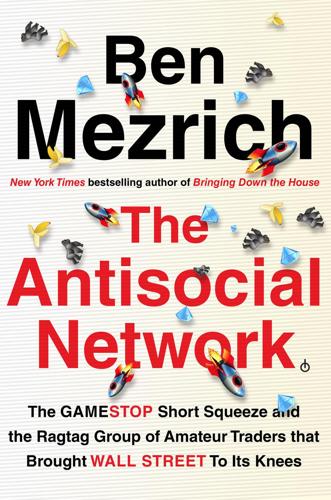
The Antisocial Network: The GameStop Short Squeeze and the Ragtag Group of Amateur Traders That Brought Wall Street to Its Knees
by
Ben Mezrich
Published 6 Sep 2021
As she went, she fought the urge to give Chinwe a hug; too soon, she figured, though if the shot was as good as they said it was, maybe soon the term “social distancing” would recede from everyone’s vocabulary. Kim couldn’t wait until it was just another shared linguistic memory. Along with “flattening the curve” and “contact tracing” and “herd immunity.” And maybe even “GameStop,” Kim added to herself as she pushed through the double doors, already reaching toward her phone, which was tucked in the pockets of her scrubs. The twenty minutes she’d spent waiting for the shot had already been the longest she’d gone that day without checking her Robinhood account or WallStreetBets; but now that she had fifteen minutes to kill before she could head home to her kids, she was ready to dive back into the madness.
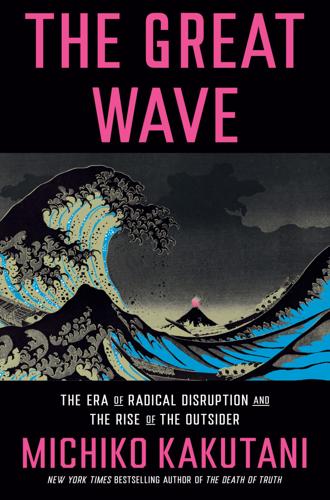
The Great Wave: The Era of Radical Disruption and the Rise of the Outsider
by
Michiko Kakutani
Published 20 Feb 2024
Many scientists are hoping that this new culture of openness stays in place after the end of the COVID crisis, because speed and cooperation are crucial factors in fighting future epidemics. Meanwhile, open sourcing during the pandemic helped suppliers and enterprising amateurs devise useful initiatives for the production or distribution of ventilators, N95 masks, and other PPE; contact tracing apps; and the use of 3-D printing. Taiwan, for instance, made some of its COVID-19 data publicly accessible, empowering members of its tech community to create various tools—including an app debunking COVID disinformation and a mask availability map, which was credited with minimizing panic-buying and hoarding.
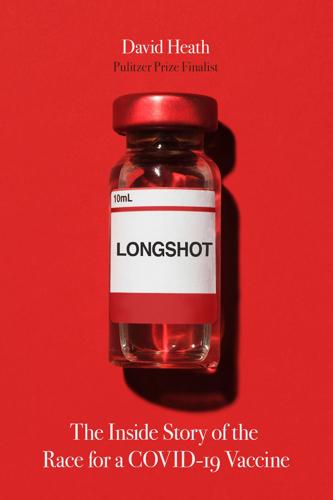
Longshot
by
David Heath
Published 18 Jan 2022
The two patients had no connection. This was catastrophic news. Riedo realized that the virus had been circulating in the Seattle area for weeks. The statistical probability that two people with no connection to China or to each other both had COVID-19 was that the virus was already out of control, past the stage of contact tracing to limit the spread. Soon, the rest of the nation would come to the same realization. Two residents of a nearby nursing home, Life Care Center of Kirkland, also tested positive. Fifty more were awaiting results. At a standing-room-only press conference the next day, Riedo predicted: “What we’re seeing is the tip of the iceberg.”
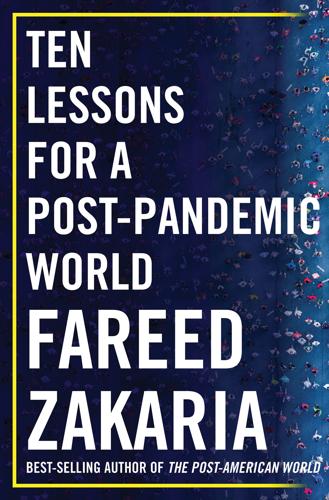
Ten Lessons for a Post-Pandemic World
by
Fareed Zakaria
Published 5 Oct 2020
Requiring everyone to supply their health data, as in China, is not an option in most democracies. At any rate, it’s mostly a moot point. China, South Korea, and Singapore do not owe their success in fighting Covid-19 to invasive new technology. Rather, what made the difference were the hallmarks of a proper pandemic response: fast, widespread testing and old-fashioned contact tracing, conducted through in-person interviews. The stumbling blocks that AI has faced in the fight against the novel coronavirus do not reflect some underlying flaw with the technology; they just reveal its limits in a special situation where much is unclear and good data is hard to come by. With time, there will be more and better data about the disease and innovative ways to use it—from mass thermal scanning for temperatures to facial recognition, both of which could be put to use in quickly detecting potential illness among large crowds in public spaces.
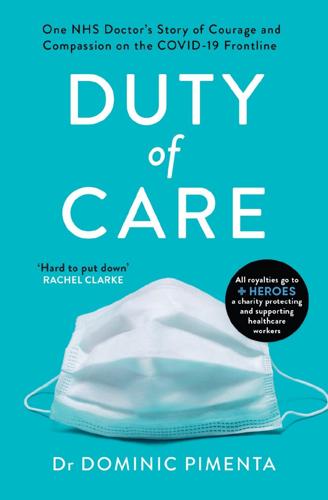
Duty of Care: One NHS Doctor's Story of the Covid-19 Crisis
by
Dr Dominic Pimenta
Published 2 Sep 2020
It then became obvious that we lacked the large-scale capacity to keep up with the pandemic, setting dodgy targets and dubiously meeting them through double-counting, before finally deciding to stop reporting the number of actual people tested entirely. The government spent £12 million on an app for contact tracing, but then, when it didn’t appear, we were told it would never have worked, and, again, diverged from the global standard. On a government level, we couldn’t have managed any aspect of this crisis worse, and appear to have learnt absolutely nothing from it, jettisoning our scientific advisors and disseminating confusing messaging to the public at the critical moment when coming out of lockdown could explode in our faces.
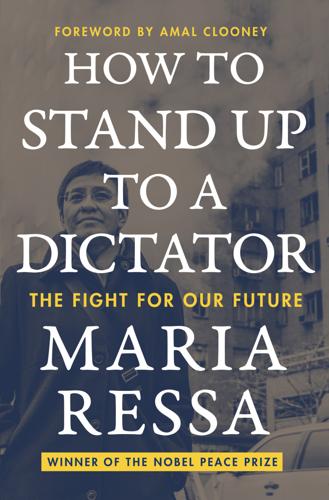
How to Stand Up to a Dictator
by
Maria Ressa
Published 19 Oct 2022
Manila was again in a pandemic lockdown, the only mitigating measure that the Duterte administration had enforced in nearly nineteen months of dealing with covid-19. The government was playing catch-up with vaccines because it had been about half a year late1 in getting a viable supply, and when it finally had, it had prioritized the Chinese-made Sinovac, which had the lowest efficacy of the available vaccines. Contact tracing remained largely aspirational, and now the Senate was investigating corruption charges for some of the largest pandemic deals that seemed to link Duterte to the dubious companies of his Chinese friend and economic adviser, Michael Yang.2 By then two of my cases had been dismissed. The constant legal battles were taking a toll on me, but I was determined to not let them stop my mission of getting out in the world and sounding the alarm.
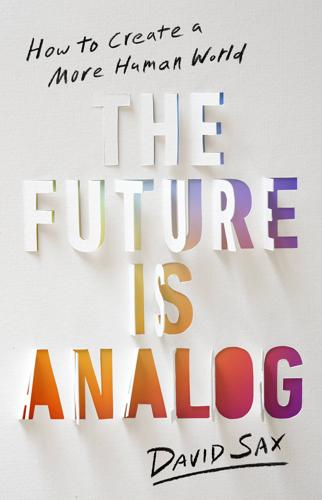
The Future Is Analog: How to Create a More Human World
by
David Sax
Published 15 Jan 2022
Instead, smart cities offer digital solutions in search of an actual problem, like one Sidewalk Labs program in Columbus, Ohio, that proposed using driverless cars and ride sharing to bring patients to medical appointments as a solution to persistently high rates of infant mortality in Black neighborhoods, rather than, say, instituting better public transit, education, and prenatal services to improve maternal and infant health in a vulnerable community. “Technology might be an answer to that, but it cannot be the answer,” Baykurt said. It reminded me of the proximity-based contact-tracing apps governments enthusiastically rolled out early on in the pandemic, which did precisely nothing to actually slow the spread of the virus. Sidewalk Labs didn’t get very far here in Toronto. It made a bunch of presentations and renderings, held some meetings, and opened an office across the street from the waterfront site it was given to develop.
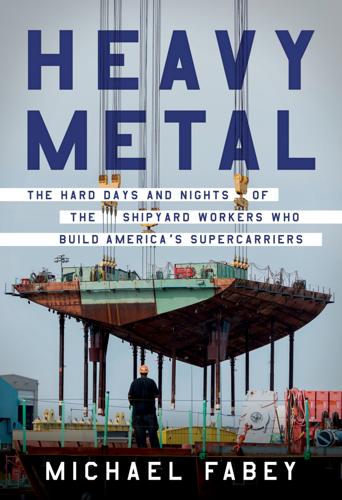
Heavy Metal: The Hard Days and Nights of the Shipyard Workers Who Build America's Supercarriers
by
Michael Fabey
Published 13 Jun 2022
The yard’s cleaning crews stepped up their efforts, and the CAG considered hiring more outside professional disinfecting services for cleaning trailers, trades buildings, shipping containers, restrooms, and other common-use areas, as well as increasing air flow and ventilation in targeted work areas, closing communal kitchen areas, providing more hand sanitizing stations and products, and broadening contact tracing. The yard collaborated more and more with the navy and its medical teams. Covid-19 is not gone and we must remain vigilant here at work and through our personal decisions outside of work, Boykin warned online. Despite Covid-19’s impact, Marzano continued to build up his crew on the Kennedy. Indeed, when former Ford CO Rear Admiral John Meier, who became commander of the Naval Air Force, Atlantic, visited the ship and its commanding officer in mid-June, he was surprised that the Kennedy was outpacing the Ford for number of boarded sailors at the same stage of construction.
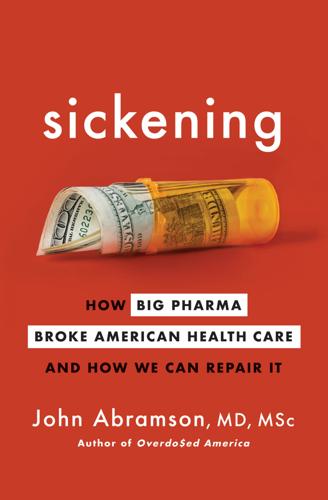
Sickening: How Big Pharma Broke American Health Care and How We Can Repair It
by
John Abramson
Published 15 Dec 2022
Our national acceptance of the so-called knowledge that is produced and disseminated with the primary purpose of maximizing return on research investments is reflected in our acceptance of committing less than 2 percent of our national health expenditures on population-based disease prevention. These chickens came home to roost during the early phases of the COVID-19 pandemic, when we failed to use low-cost public health measures (masking, social distancing, handwashing, testing, and contact tracing) and instead turned to unproven medicines (like hydroxychloroquine and remdesivir) to rescue those who became ill. The final piece of this puzzle is how comparatively little we spend on the social factors that determine the other four-fifths of our health. In The American Healthcare Paradox: Why Spending More Is Getting Us Less, Elizabeth Bradley and Lauren Taylor showed that, compared to other OECD countries, we spend a far greater percentage of our GDP on health care but a far lower percentage than most on “social services” (such as supports for older adults, disability benefits, rent subsidies, and so on).
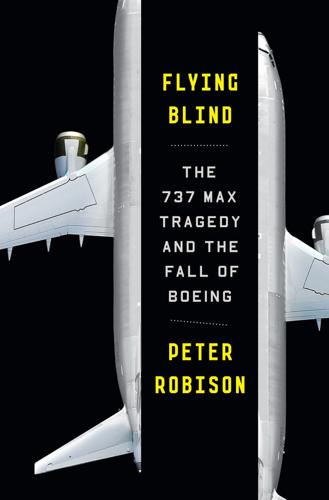
Flying Blind: The 737 MAX Tragedy and the Fall of Boeing
by
Peter Robison
Published 29 Nov 2021
“If this continues across the nation, when you open your package of meat, what you’re going to get for a pathogen is going to be a mystery,” a longtime inspector said in December 2019. That same month, a pathogen of a different sort started sickening people at a market in Wuhan. Many other countries managed the crisis effectively, rapidly deploying widespread testing and contact tracing. The United States stumbled, with the Centers for Disease Control and Prevention botching a simple test that could have slowed the outbreak in its crucial early months. Just as the FAA had been eclipsed by regulators from other national and international bodies, the CDC was shown to be no longer the world’s gold standard in public health.
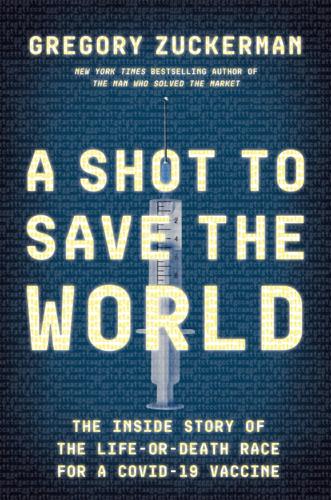
A Shot to Save the World: The Inside Story of the Life-Or-Death Race for a COVID-19 Vaccine
by
Gregory Zuckerman
Published 25 Oct 2021
Weiss emailed a colleague at the time. SARS-CoV disappeared in about eight months, though, killing fewer than one thousand people. Early adoption of mask wearing, handwashing, and temperature-taking ended the epidemic. And the virus was primarily spread by those who were ill, not asymptomatic people, so isolation and contact tracing were effective public-health measures. Several companies tried developing SARS vaccines, including GlaxoSmithKline and the small Maryland biotech that Gale Smith of MicroGeneSys had joined, Novavax, but the epidemic’s rapid end made their efforts unnecessary. SARS-CoV hung around long enough for scientists to further their understanding of coronaviruses, though.

Stakeholder Capitalism: A Global Economy That Works for Progress, People and Planet
by
Klaus Schwab
Published 7 Jan 2021
TZ_SPE_ID=251. 17 Interview with Bai Chong-En by Peter Vanham, Beijing, September 2019. 18 “Redlining,” Encyclopedia Britannica, https://www.britannica.com/topic/redlining. 19 “Key Facts about the Uninsured Population,” Kaiser Family Foundation, December 2019, https://www.kff.org/uninsured/issue-brief/key-facts-about-the-uninsured-population/. 20 “53% of Americans Say the Internet Has Been Essential During the COVID-19 Outbreak,” Pew Research Center, April 2020, https://www.pewresearch.org/internet/2020/04/30/53-of-americans-say-the-internet-has-been-essential-during-the-covid-19-outbreak/. 21 “59% of US Parents with Lower Incomes Say Their Child May Face Digital Obstacles in Schoolwork,” Pew Research Center, September 2020, https://www.pewresearch.org/fact-tank/2020/09/10/59-of-u-s-parents-with-lower-incomes-say-their-child-may-face-digital-obstacles-in-schoolwork/. 22 “Is a Successful Contact Tracing App Possible? These Countries Think So,” MIT Technology Review, August 2020, https://www.technologyreview.com/2020/08/10/1006174/covid-contract-tracing-app-germany-ireland-success/. 23 “Why Singapore Has One of the Highest Home Ownership Rates,” Adam Majendie, Bloomberg City Lab, July 2020, https://www.bloomberg.com/news/articles/2020-07-08/behind-the-design-of-singapore-s-low-cost-housing. 24 “HDB's Ethnic Integration Policy: Why It Still Matters,” Singapore Government, April 2020, https://www.gov.sg/article/hdbs-ethnic-integration-policy-why-it-still-matters. 25 Ibidem. 26 “Why Singapore Has One of the Highest Home Ownership Rates,” Adam Majendie, Bloomberg City Lab, July 2020, https://www.bloomberg.com/news/articles/2020-07-08/behind-the-design-of-singapore-s-low-cost-housing. 27 “Singapore Remains the 2nd Most Expensive Housing Market in the World after Hong Kong,” CBRE, April 2019, https://www.cbre.com/singapore/about/media-centre/singapore-remains-the-2nd-most-expensive-housing-market-in-the-world-after-hong-kong. 28 “What Other Countries Can Learn from Singapore's Schools,” The Economist, August 2018, https://www.economist.com/leaders/2018/08/30/what-other-countries-can-learn-from-singapores-schools. 29 “What Other Countries Can Learn from Singapore's Schools,” The Economist, August 2018, https://www.economist.com/leaders/2018/08/30/what-other-countries-can-learn-from-singapores-schools. 30 “Education System Designed to Bring Out Best in Every Student: PM,” The Straits Times, January 2020, https://www.straitstimes.com/singapore/education-system-designed-to-bring-out-best-in-every-student-pm. 31 “The Healthiest Countries to Live In,” BBC, April 2020, http://www.bbc.com/travel/story/20200419-coronavirus-five-countries-with-the-best-healthcare-systems.
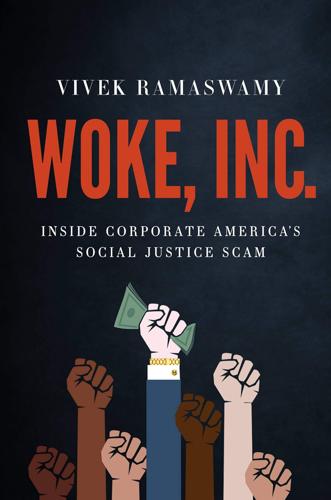
Woke, Inc: Inside Corporate America's Social Justice Scam
by
Vivek Ramaswamy
Published 16 Aug 2021
So it’s difficult to view his widely publicized comments about election fraud and his “prayers” that Trump use military force to retain power in January 2021 as being entirely separate from his own commercial agenda.28 The Chinese have gotten in on the act too. During the COVID-19 pandemic, one state-affiliated Chinese company charitably “donated” drones to local US law enforcement agencies to help enforce social distancing and contact tracing during the national lockdown. The trick? Free surveillance. The victims of pre-2008 capitalist excess were the cash-strapped strippers and little people and, arguably, in certain cases, the shareholders and clients who were shortchanged a few bucks to pay for lavish entertainment. In 2008, the American taxpayers found themselves on the hook when corporate excesses were “fixed” with a bailout.

The Data Detective: Ten Easy Rules to Make Sense of Statistics
by
Tim Harford
Published 2 Feb 2021
One day, it’s like a miracle, it will disappear.” Four weeks later, with 1,300 Americans dead and more confirmed cases in the United States than any other country, Mr. Trump was still talking hopefully about getting everybody to church at Easter.9 As I write, debates are raging. Can rapid testing, isolation, and contact tracing contain outbreaks indefinitely, or only delay their spread? Should we worry more about small indoor gatherings or large outdoor gatherings? Does closing schools help prevent the spread of the virus, or do more harm as children go to stay with vulnerable grandparents? How much does wearing masks help?
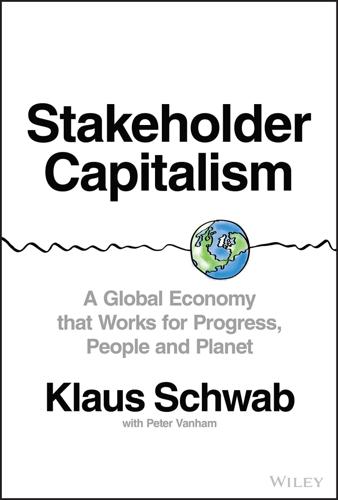
Stakeholder Capitalism: A Global Economy That Works for Progress, People and Planet
by
Klaus Schwab
and
Peter Vanham
Published 27 Jan 2021
TZ_SPE_ID=251. 17 Interview with Bai Chong-En by Peter Vanham, Beijing, September 2019. 18 “Redlining,” Encyclopedia Britannica, https://www.britannica.com/topic/redlining. 19 “Key Facts about the Uninsured Population,” Kaiser Family Foundation, December 2019, https://www.kff.org/uninsured/issue-brief/key-facts-about-the-uninsured-population/. 20 “53% of Americans Say the Internet Has Been Essential During the COVID-19 Outbreak,” Pew Research Center, April 2020, https://www.pewresearch.org/internet/2020/04/30/53-of-americans-say-the-internet-has-been-essential-during-the-covid-19-outbreak/. 21 “59% of US Parents with Lower Incomes Say Their Child May Face Digital Obstacles in Schoolwork,” Pew Research Center, September 2020, https://www.pewresearch.org/fact-tank/2020/09/10/59-of-u-s-parents-with-lower-incomes-say-their-child-may-face-digital-obstacles-in-schoolwork/. 22 “Is a Successful Contact Tracing App Possible? These Countries Think So,” MIT Technology Review, August 2020, https://www.technologyreview.com/2020/08/10/1006174/covid-contract-tracing-app-germany-ireland-success/. 23 “Why Singapore Has One of the Highest Home Ownership Rates,” Adam Majendie, Bloomberg City Lab, July 2020, https://www.bloomberg.com/news/articles/2020-07-08/behind-the-design-of-singapore-s-low-cost-housing. 24 “HDB's Ethnic Integration Policy: Why It Still Matters,” Singapore Government, April 2020, https://www.gov.sg/article/hdbs-ethnic-integration-policy-why-it-still-matters. 25 Ibidem. 26 “Why Singapore Has One of the Highest Home Ownership Rates,” Adam Majendie, Bloomberg City Lab, July 2020, https://www.bloomberg.com/news/articles/2020-07-08/behind-the-design-of-singapore-s-low-cost-housing. 27 “Singapore Remains the 2nd Most Expensive Housing Market in the World after Hong Kong,” CBRE, April 2019, https://www.cbre.com/singapore/about/media-centre/singapore-remains-the-2nd-most-expensive-housing-market-in-the-world-after-hong-kong. 28 “What Other Countries Can Learn from Singapore's Schools,” The Economist, August 2018, https://www.economist.com/leaders/2018/08/30/what-other-countries-can-learn-from-singapores-schools. 29 “What Other Countries Can Learn from Singapore's Schools,” The Economist, August 2018, https://www.economist.com/leaders/2018/08/30/what-other-countries-can-learn-from-singapores-schools. 30 “Education System Designed to Bring Out Best in Every Student: PM,” The Straits Times, January 2020, https://www.straitstimes.com/singapore/education-system-designed-to-bring-out-best-in-every-student-pm. 31 “The Healthiest Countries to Live In,” BBC, April 2020, http://www.bbc.com/travel/story/20200419-coronavirus-five-countries-with-the-best-healthcare-systems.

You've Been Played: How Corporations, Governments, and Schools Use Games to Control Us All
by
Adrian Hon
Published 14 Sep 2022
As COVID-19 spread beyond China, websites tracked cases and deaths in real time, with commenters grimly comparing them to the video game Plague, Inc., where players intentionally spread and evolve a virus to wipe out humanity.10 No doubt this was one reason why China banned the game in February 2020; and why, in the following month, the developers donated a quarter of a million dollars to fight COVID-19, and in November, released an expansion where players try to save the world through contact tracing, furlough schemes, and vaccine development.11 Grimmer still is the weaponisation of video games by the far right. The perpetrator of the Christchurch mosque shootings in March 2019 livestreamed his attack with a headcam, the video reminiscent of a first-person shooter game.12 He was a user on the far right 8chan forum, where others later commented on the number of deaths in his attack and their desire to “beat his high score.”

Shutdown: How COVID Shook the World's Economy
by
Adam Tooze
Published 15 Nov 2021
By early February, fourteen provinces and cities that accounted for almost 70 percent of the population had shut down. The Chinese economy—the second largest in the world, the main engine of global growth—was being put on hold. Some containment measures were high tech. In Shanghai, before leaving either the train station or the airport, travelers were required to sign up for a contact tracing app.18 If you could not remember your own movements, a quick text to one of the cell phone providers would produce a list. Yunnan province installed QR codes in all public places so that people could scan themselves on entry.19 In most of China, control worked through more hands-on methods led by neighborhood committees, backed up by the regime’s “grid management” system of local party organizations.

AI 2041: Ten Visions for Our Future
by
Kai-Fu Lee
and
Qiufan Chen
Published 13 Sep 2021
Aggregated data from these devices will accurately identify if you have a serious condition, whether it is a fever, a stroke, arrhythmia, apnea, asphyxiation, or just injuries from a fall. All this Internet of Things (IoT) data will be combined with other healthcare information such as medical history, contact-tracing records, and infection-control data, to predict and warn about future pandemics. Privacy will be an alarming issue for some users, so the system will need to anonymize the data by replacing each name with a consistent and untraceable pseudonym. Also, we should research technology solutions that will allow us to have centralized AI while protecting privacy (more on this in chapter 9).

Doppelganger: A Trip Into the Mirror World
by
Naomi Klein
Published 11 Sep 2023
Not to mention providing a steady supply of free at-home rapid tests, proper protective gear at work, and, critically, adequate sick leave for all workers so that no one feels obliged to show up to work in an infectious state. In the early phase of the pandemic, there could also have been major investments in contact tracing at the community level, which would have had the added benefit of creating jobs in neglected areas. And there could have been far more robust efforts to install high-quality air filters in public spaces, including schools, while hiring more teachers and teacher’s aides so class sizes could be smaller—all measures proven to reduce the virus’s spread, with plenty of knock-on benefits to students and educators.

Evil Geniuses: The Unmaking of America: A Recent History
by
Kurt Andersen
Published 14 Sep 2020
In May, at the end of “30 Days to Slow the Spread,” the president was still thinking magically, a de facto nostalgist for the days before modern medicine. Believe in our perfect mythical yesteryear. “Testing [people] is somewhat overrated,” he said, and “this is going to go away without a vaccine.” In other words, a reporter asked the president, Americans just had to accept that reopening without enough testing and contact-tracing would cause lots more deaths? Yes. “I call these people warriors, and I’m actually calling now…the nation, warriors. You have to be warriors,” by which he meant, of course, be willing to be killed by COVID-19, fallen soldiers for American capitalism. But apart from that, everything would soon be fantastic.
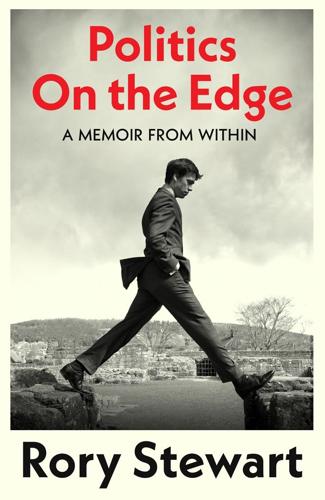
Politics on the Edge: The Instant #1 Sunday Times Bestseller From the Host of Hit Podcast the Rest Is Politics
by
Rory Stewart
Published 13 Sep 2023
Jeremy Farrar, the director of the Wellcome Trust interjected to explain that, in his view, Ebola was not the main problem. The real problem was that it was distracting attention and resources from malaria, tuberculosis and HIV/AIDS, which would kill far more people. ‘A great deal,’ Chris Whitty added, ‘is still unknown about what is happening, whether contact tracing is possible or even desirable. The WHO has been reluctant to declare a global emergency. There is a chance that the disease has already spread too far to be contained.’ He agreed that there was an argument for acting. But there was no certain answer on whether acting would work. And we should not rely too much on the idea of a vaccine.

The Land of Hope and Fear: Israel's Battle for Its Inner Soul
by
Isabel Kershner
Published 16 May 2023
Considered a failed town in the early 2000s, its turnaround began after a retired general, Amram Mitzna, was appointed to serve as its acting mayor. Residents took back the reins after a few years, and by 2020 a dynamic new mayor, Tal Ohana, had won national accolades for her handling of a coronavirus outbreak in the town, after setting up her own municipal contact tracing system to cut the chain of infection. The majority of Israel’s Mizrahim no longer lived in the development towns, which now accounted for only about 10 percent of the country’s overall population. Nevertheless, these towns were still associated with the second, other Israel, including the poorer Russian-speaking and Ethiopian immigrants who mostly came in the 1990s, and they still occupied the lower rungs of Israel’s socioeconomic ladder, with the central government having invested little in improving their conditions.
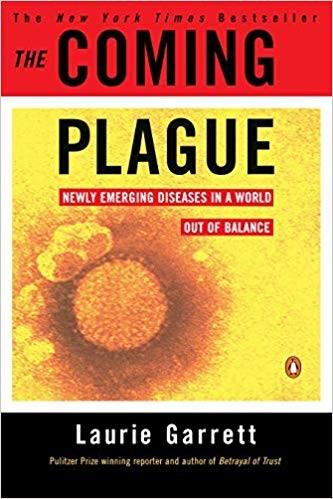
The Coming Plague: Newly Emerging Diseases in a World Out of Balance
by
Laurie Garrett
Published 31 Oct 1994
It was widely felt, therefore, that the problem could be safely left to public venereal disease clinics. Many private physicians were quite content with this approach, since it more or less absolved them of having to deal with diseases widely considered “not nice” and which confronted the doctor with the difficult and often delicate problem of contact tracing. The public clinics, however, were relegated to second class status, underfunded and understaffed, even within health departments. Simultaneously, there was a radical de-emphasis of STDs in medical schools: Since the problem was “under control,” there was obviously little point in training physicians to deal with it.
…
To Francis this seemed to be ample reason to recommend that gay men start using condoms, but such proclamations were uncomfortable for the CDC, which still adhered to the old venereal disease paradigm of identifying cases, contacting all their partners, and treating everyone with antibiotics. But hepatitis B was a virus; it couldn’t be effectively treated with any drug. And contact tracing was clearly impossible if an individual had multiple, anonymous sex partners. Francis saw no alternative but prevention to block transmission of the virus, by creating either a physical barrier (condoms) or immunity (vaccination). By 1980 he was actively pushing both angles and, in his usual gruff but earnest manner, making enemies among the more traditional bureaucrats and venereologists at the CDC.

Power and Progress: Our Thousand-Year Struggle Over Technology and Prosperity
by
Daron Acemoglu
and
Simon Johnson
Published 15 May 2023
Another platform, g0v, provides open data from several Taiwanese ministries, which civic hackers can use to develop alternative versions of bureaucratic services. These technologies helped Taiwan’s early and effective response to COVID-19, in which the private sector and civil society collaborated with the government to develop tools for testing and contact tracing. New forums for virtual participation can of course repeat the same mistakes that social media commits today, exacerbating echo chambers and extremism. Once such tools start being used extensively, some parties will come up with strategies to spread disinformation, whereas others might use such platforms for demagoguery.

Digital Empires: The Global Battle to Regulate Technology
by
Anu Bradford
Published 25 Sep 2023
Their Freedom on the Net 2021 report measures countries’ internet freedom across indicators such as obstacles to internet access, limits on content, and violations of user rights, and found that global internet freedom had declined for an eleventh consecutive year.148 The same report documents that the procurement of spyware is proliferating, with a growing number of governments gaining access to sophisticated surveillance technology.149 This suggests that numerous authoritarian governments are eagerly embracing surveillance technologies in their efforts to control their societies—and China provides them the tools to do so. The COVID-19 pandemic may further increase demand for digital surveillance technologies around the world. All governments were scrambling to prevent the spread of the pandemic, and many quickly deployed digital technology to introduce new contact-tracing measures. Digital surveillance proved helpful in tracking potential infections and alerting individuals who could have been exposed to the virus. China’s relatively more successful control of the COVID-19 pandemic during its early stages can, in part, be attributed to its societal willingness to tolerate highly invasive digital surveillance measures alongside with harsh lockdowns—even if those invasive measures have since been heavily criticized.